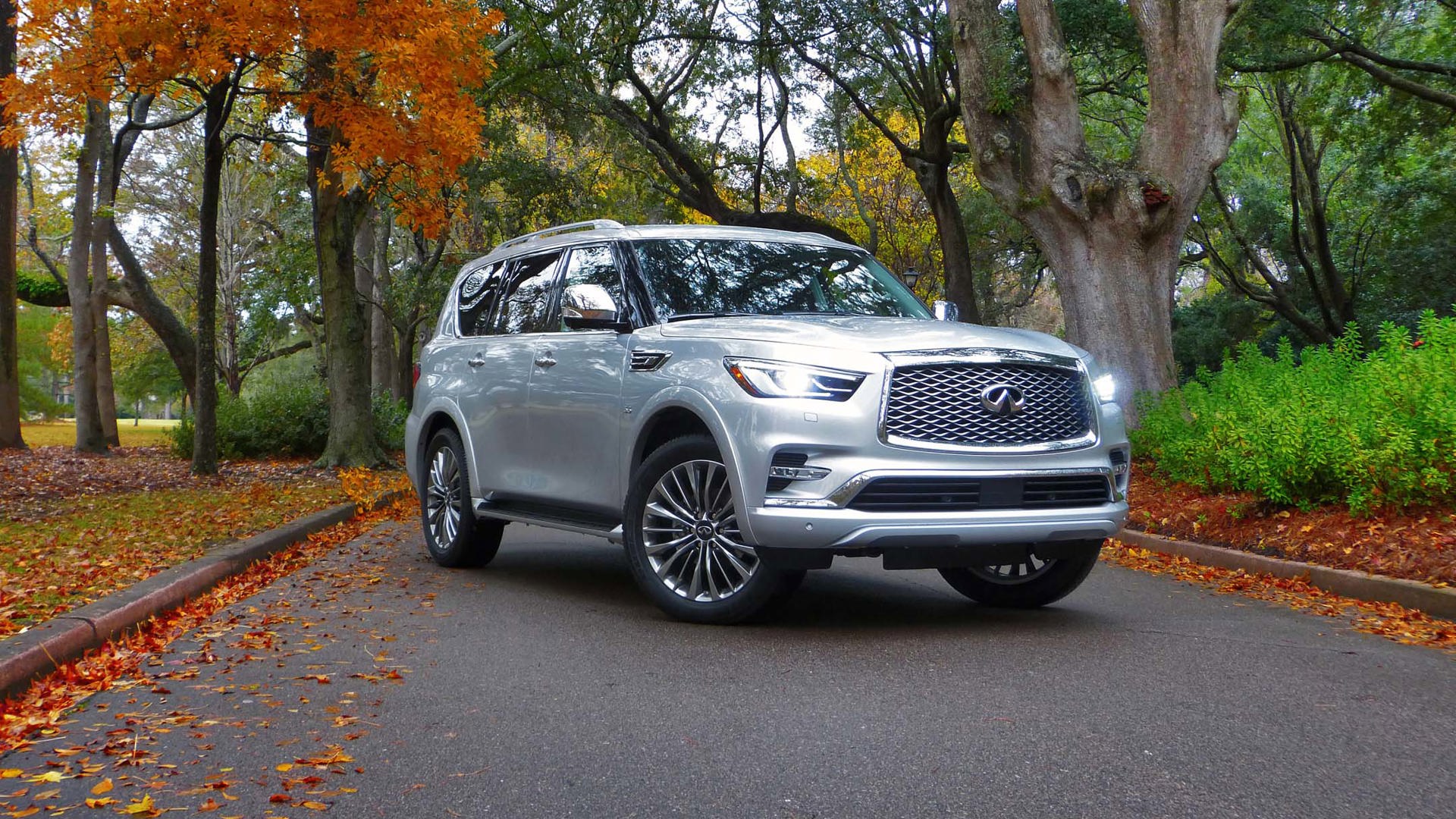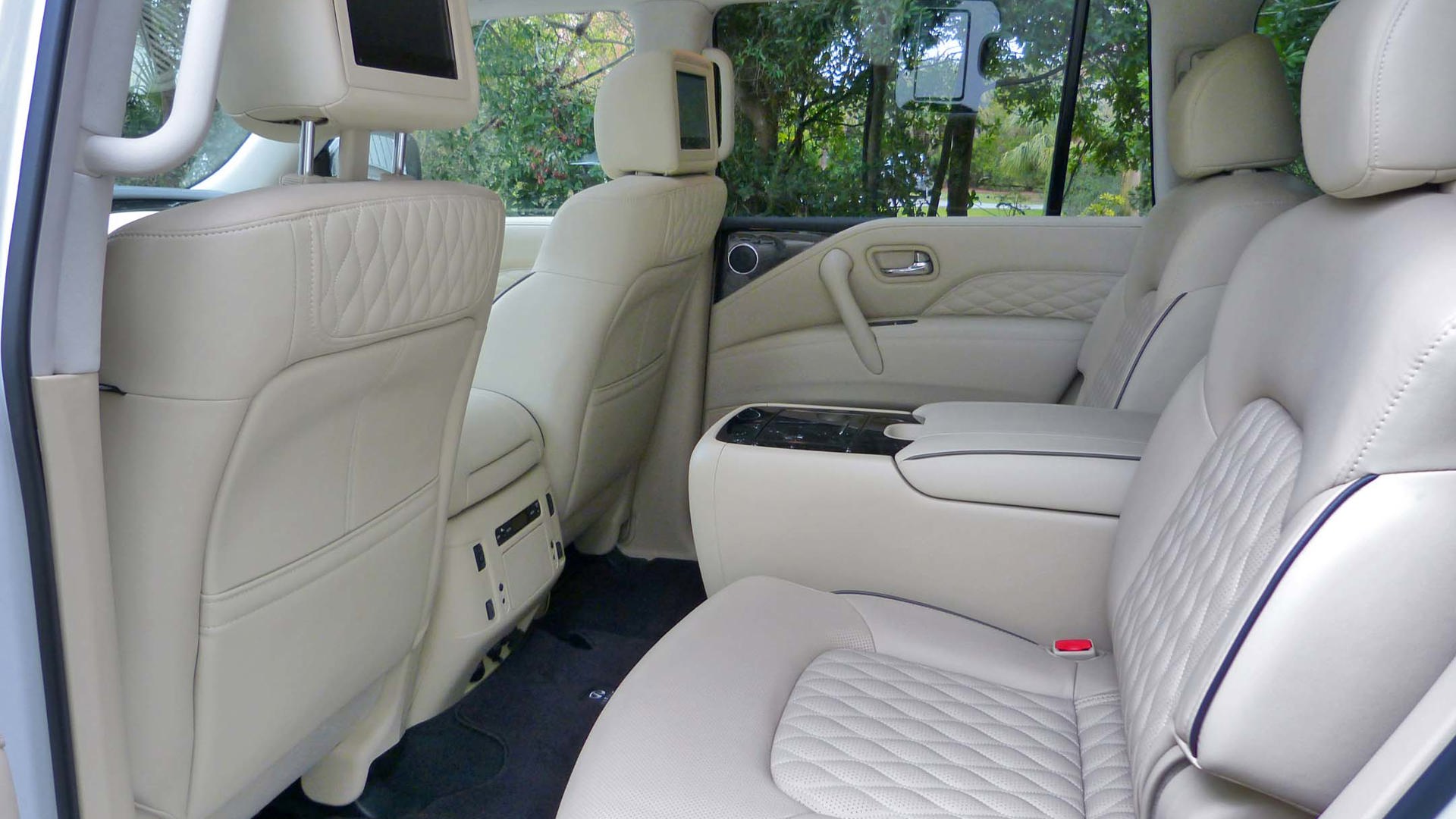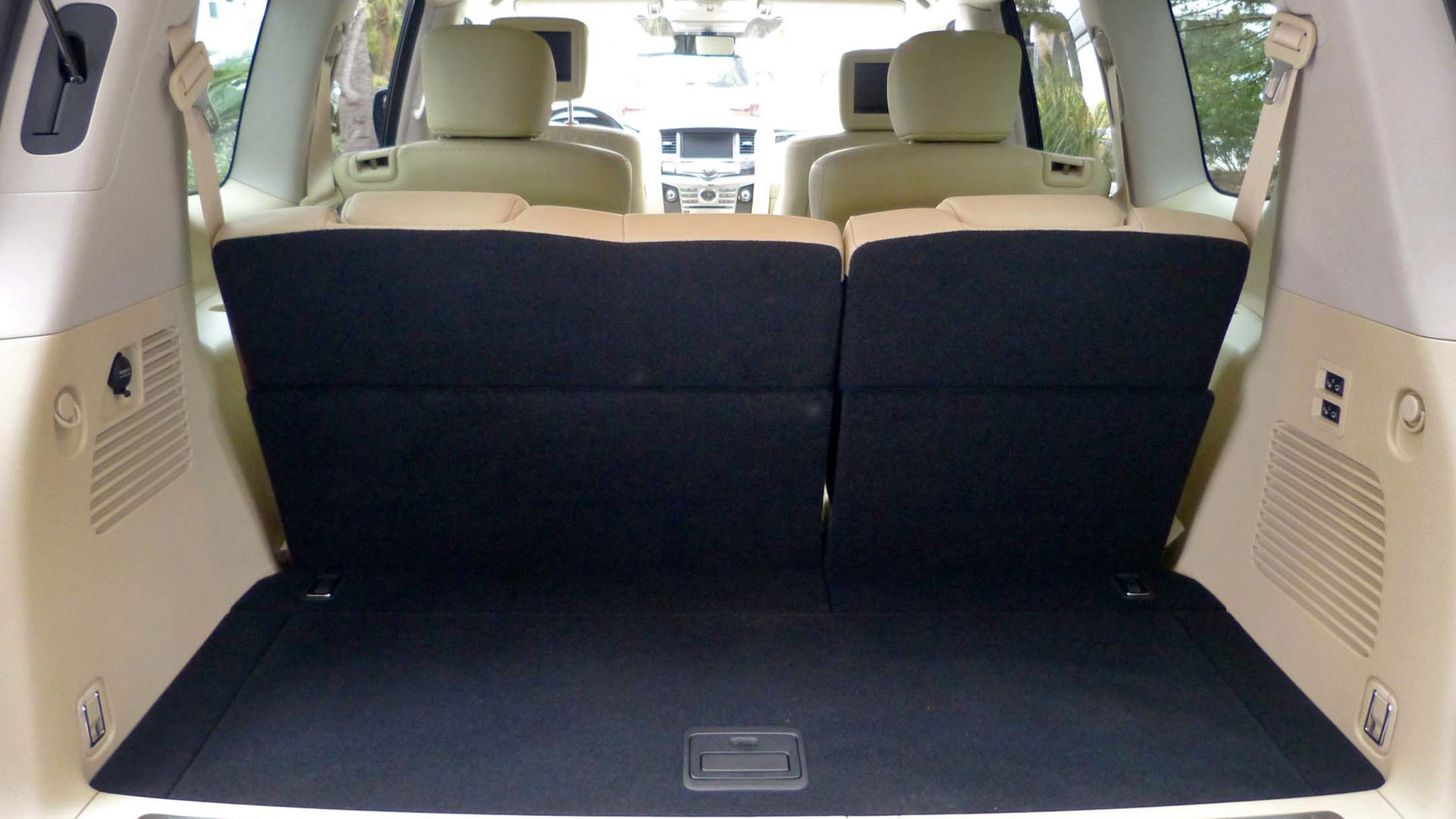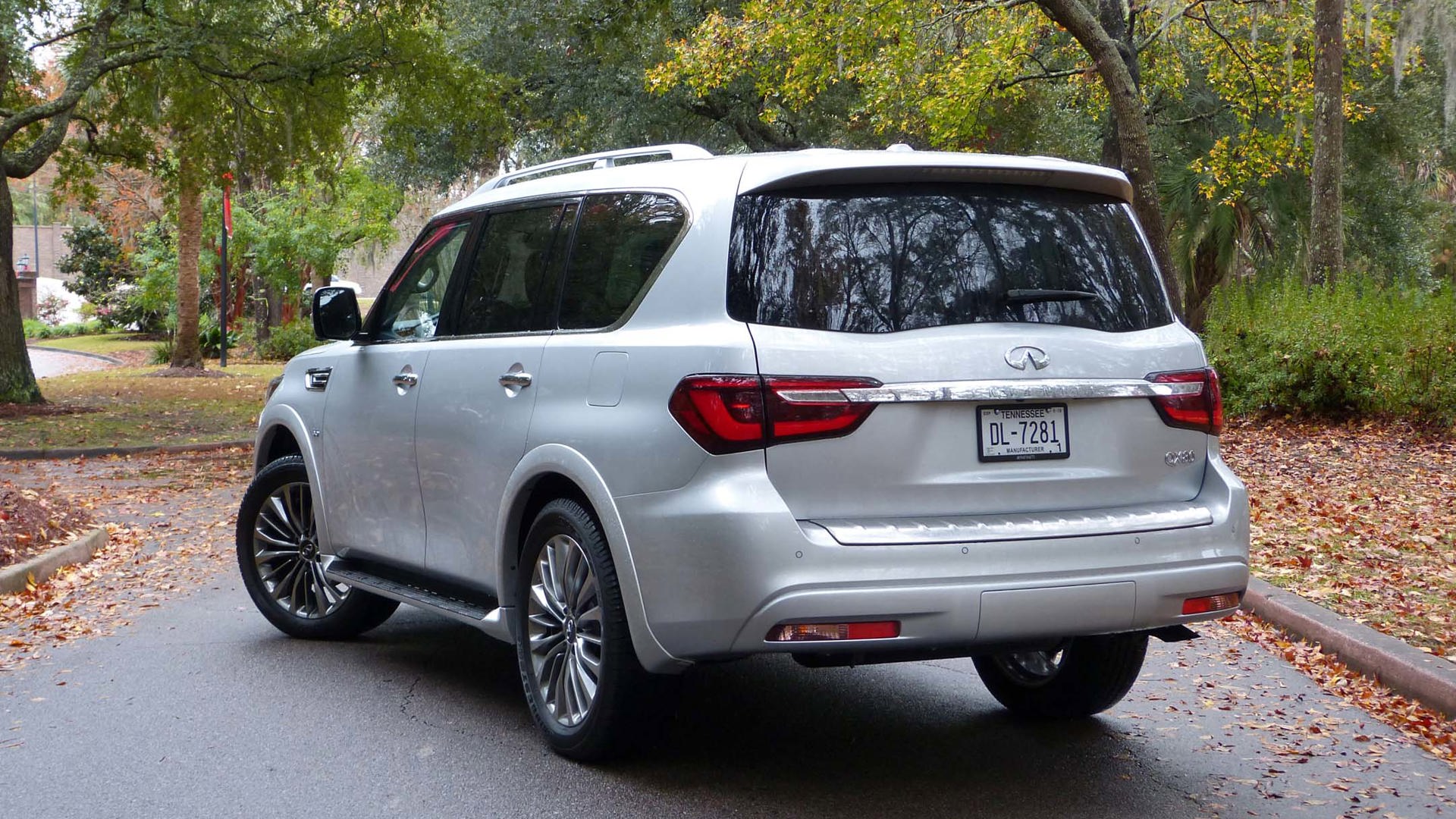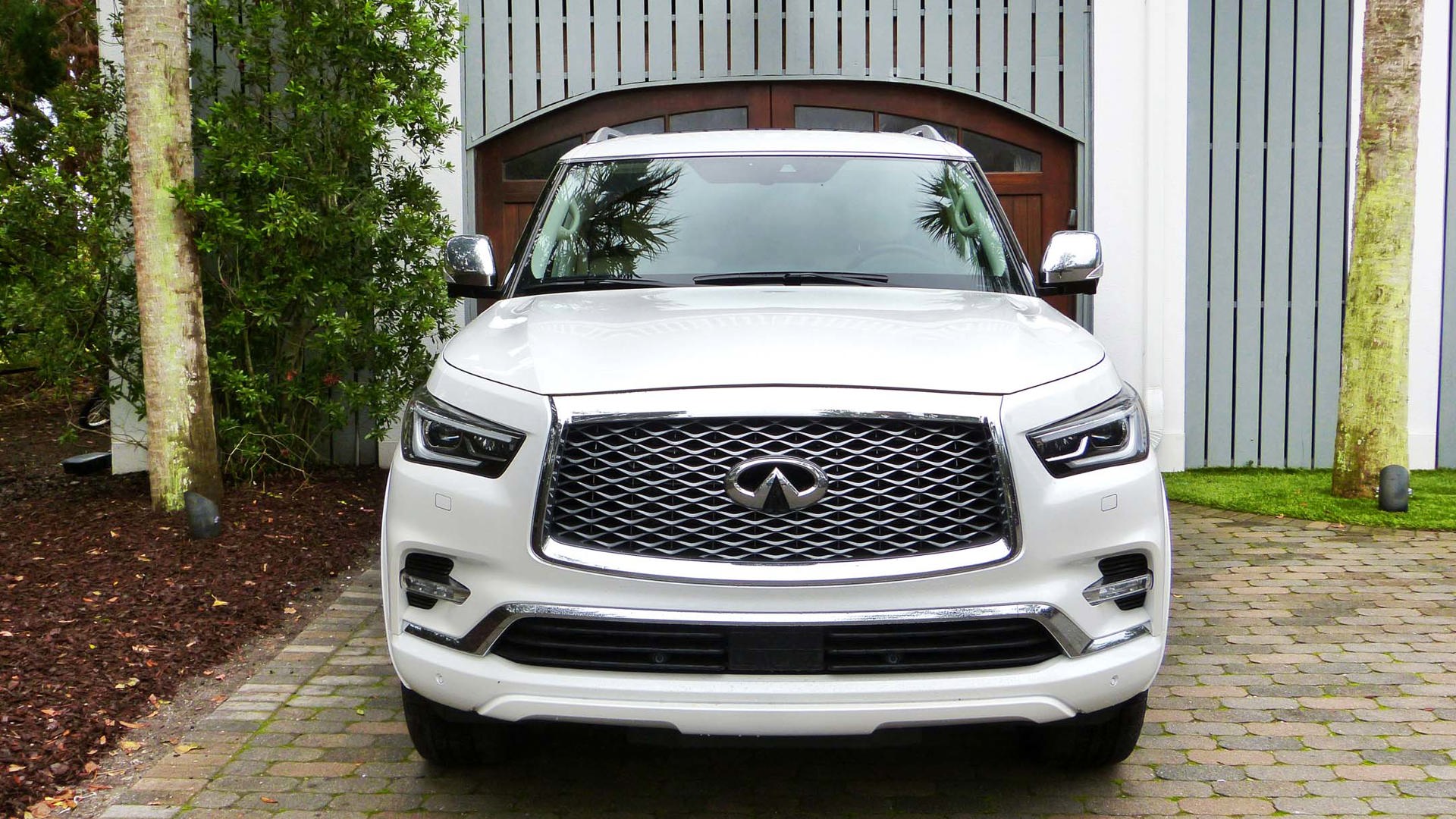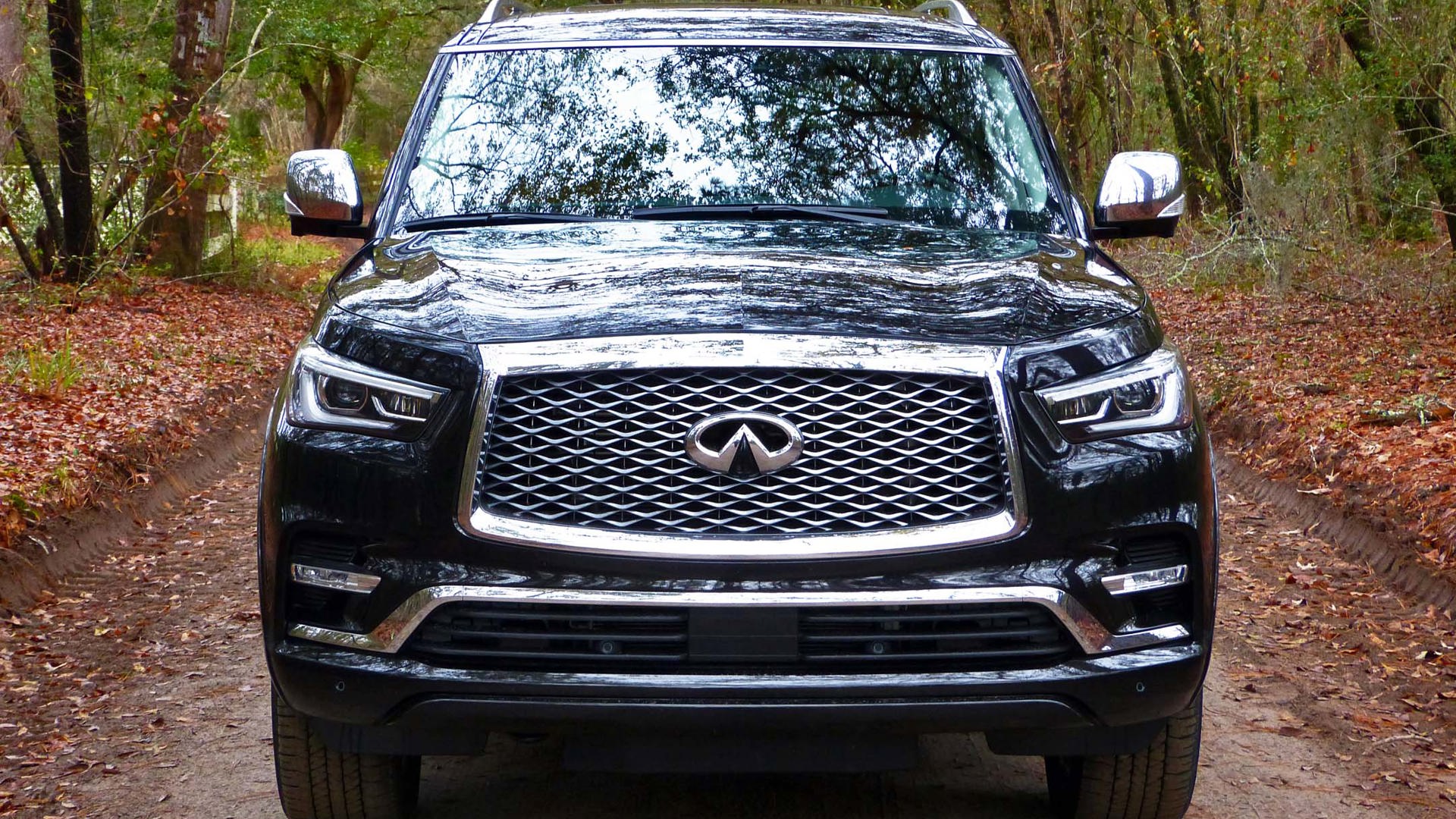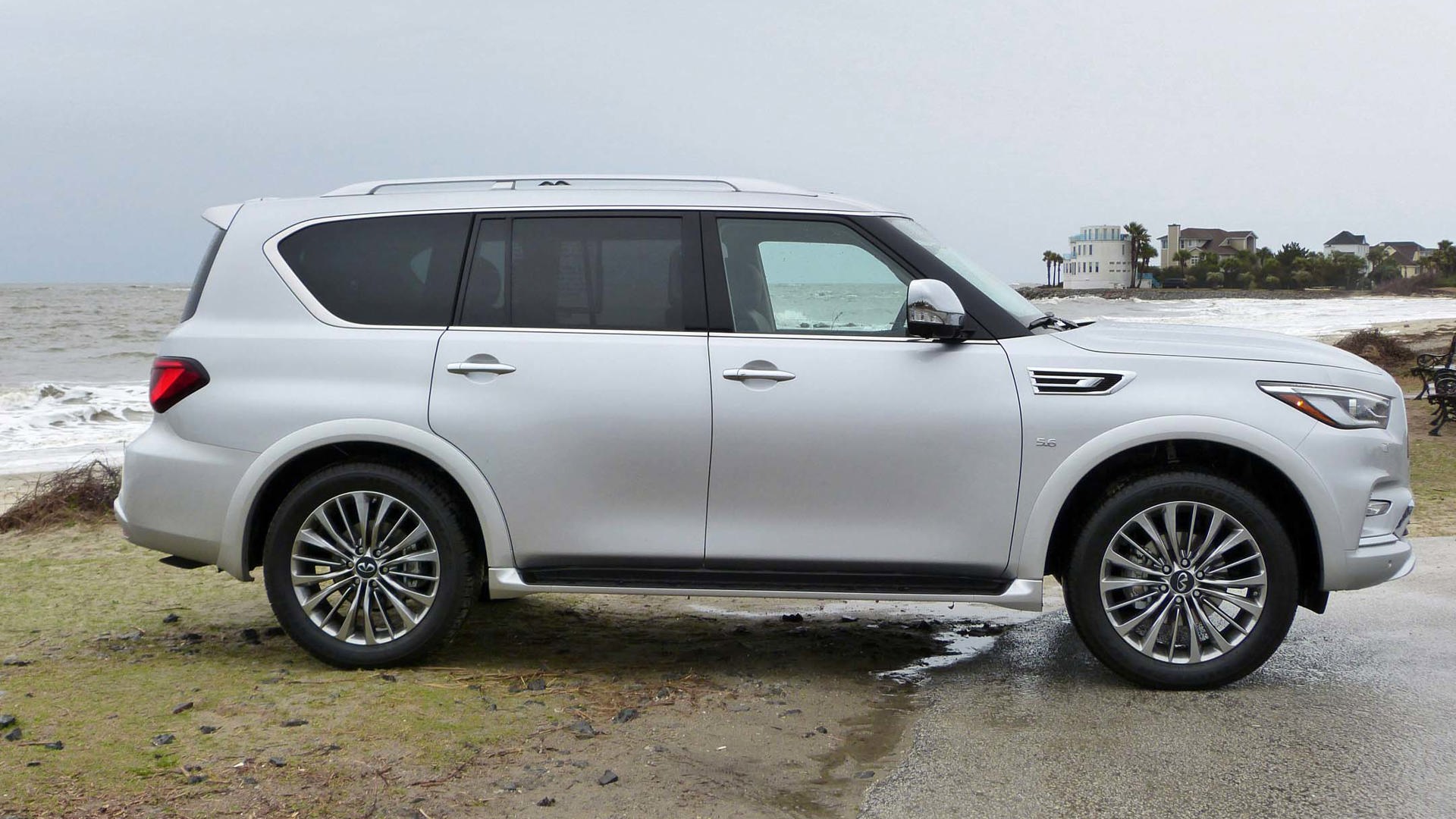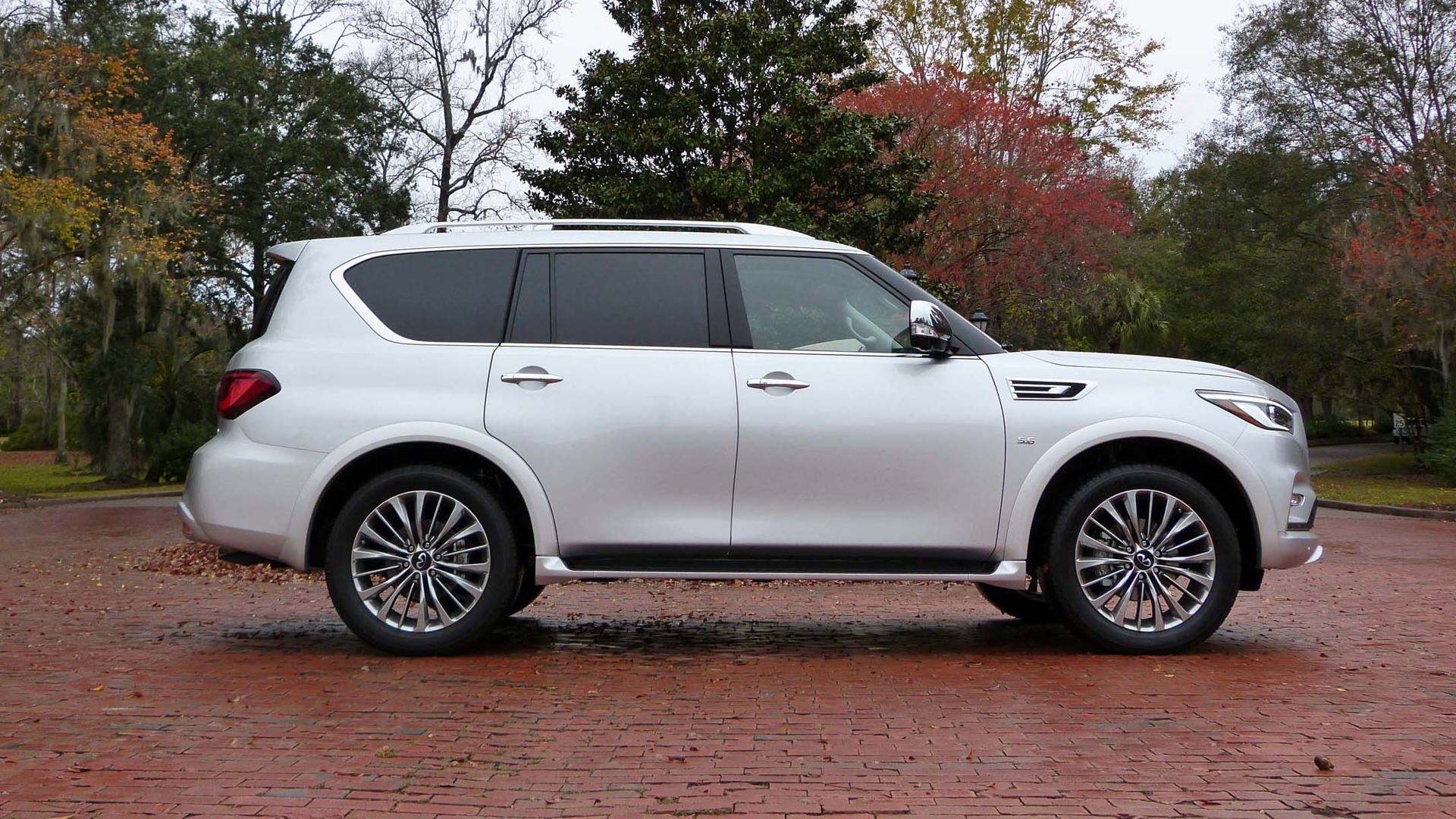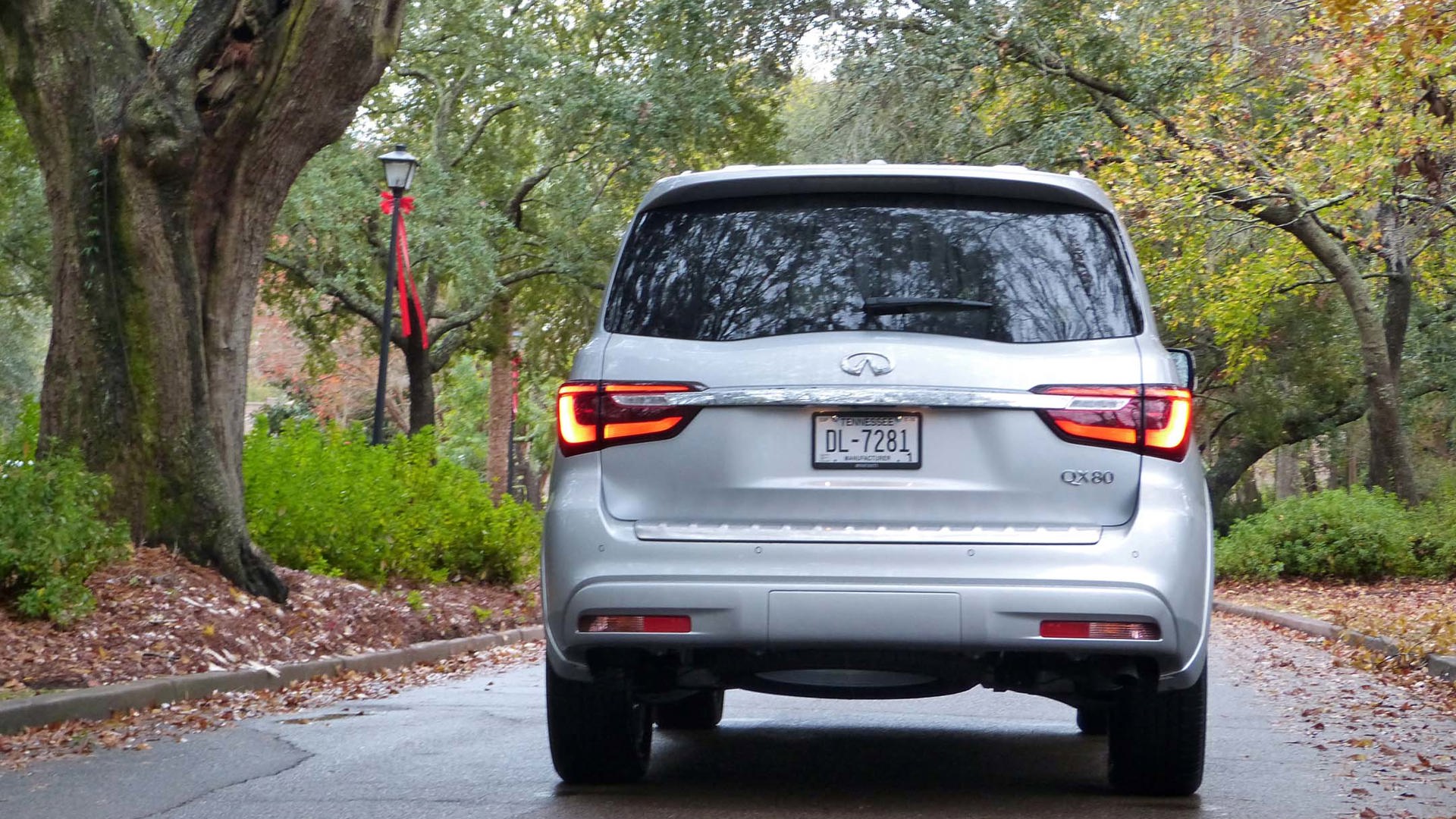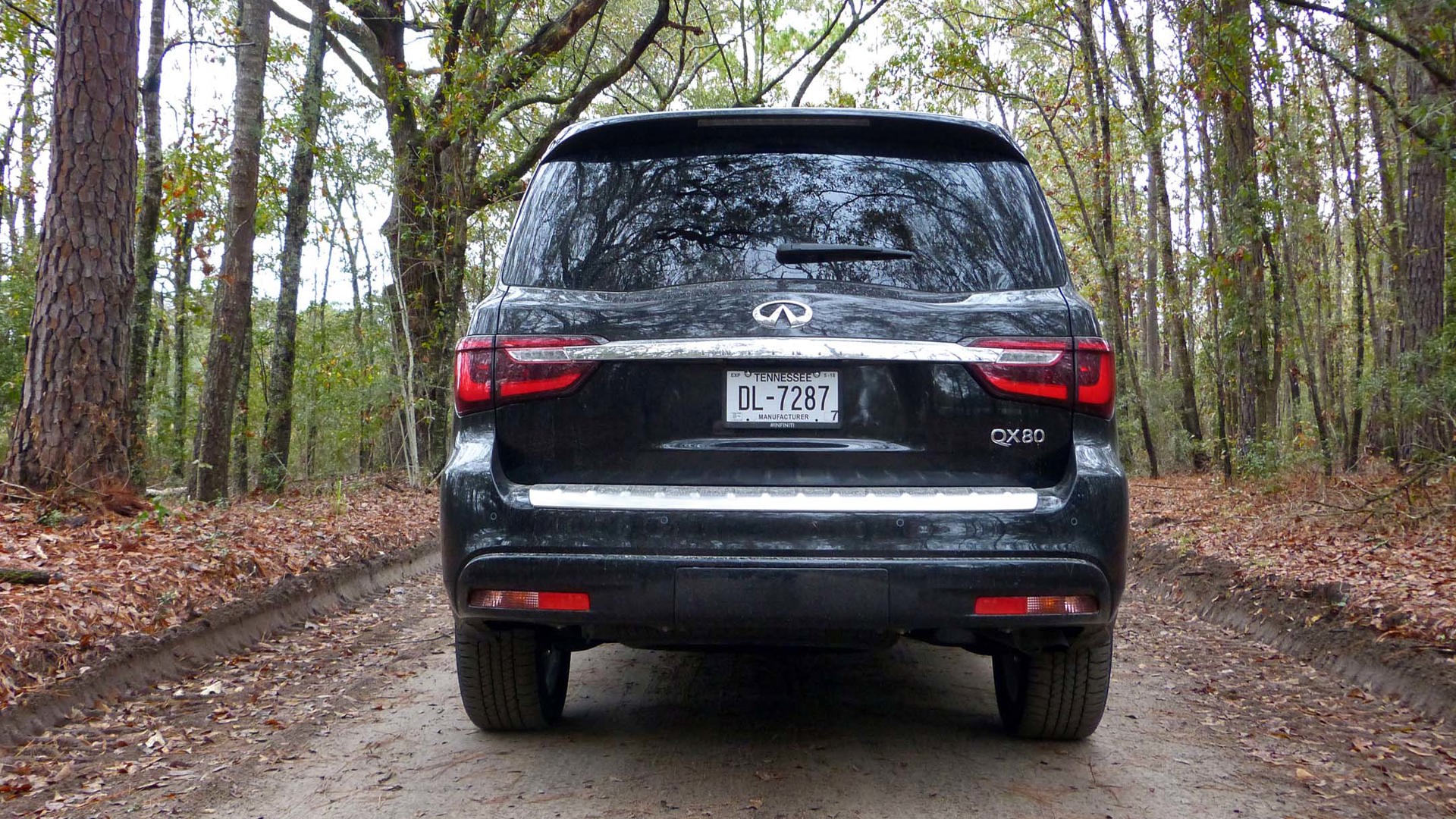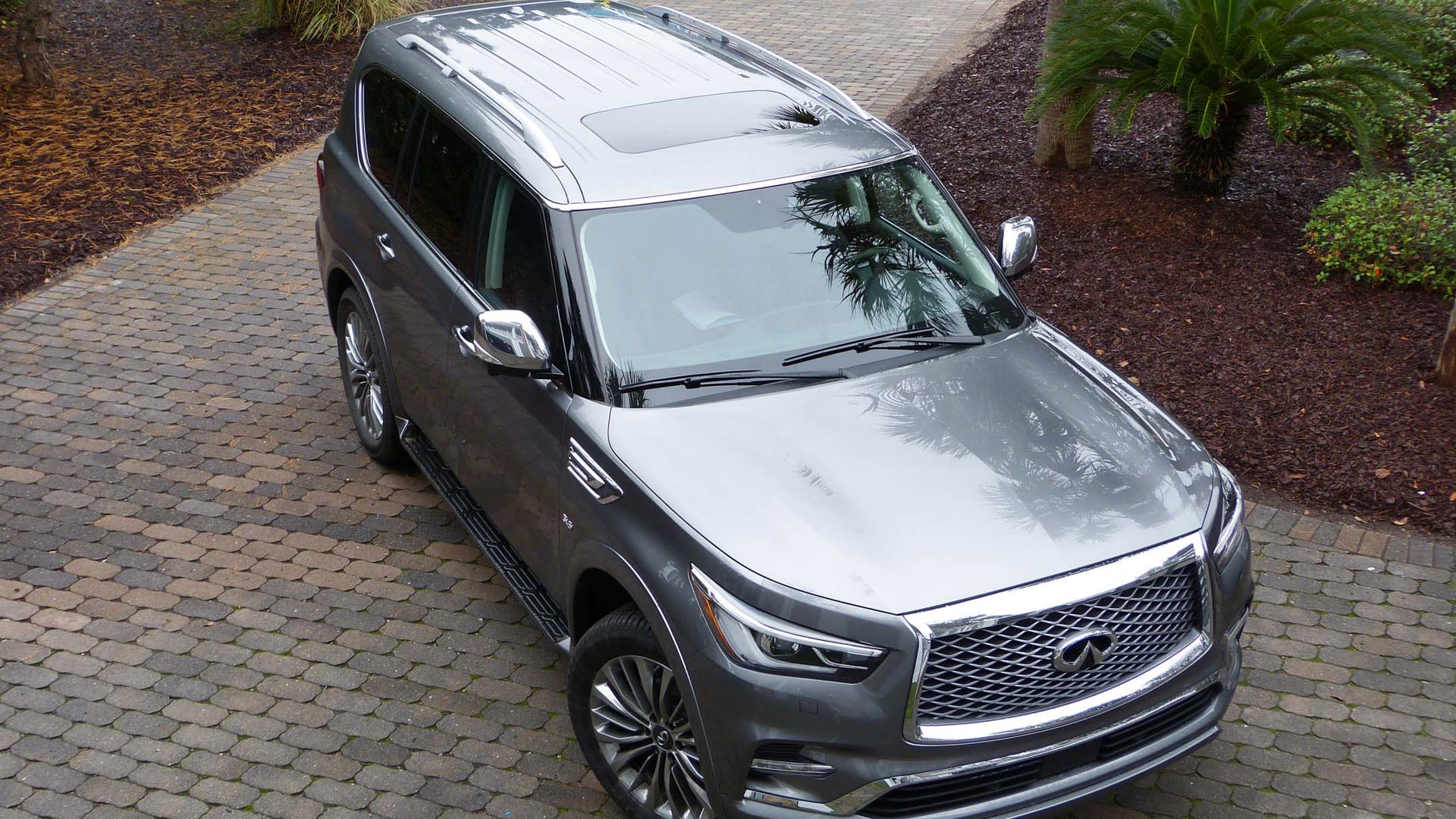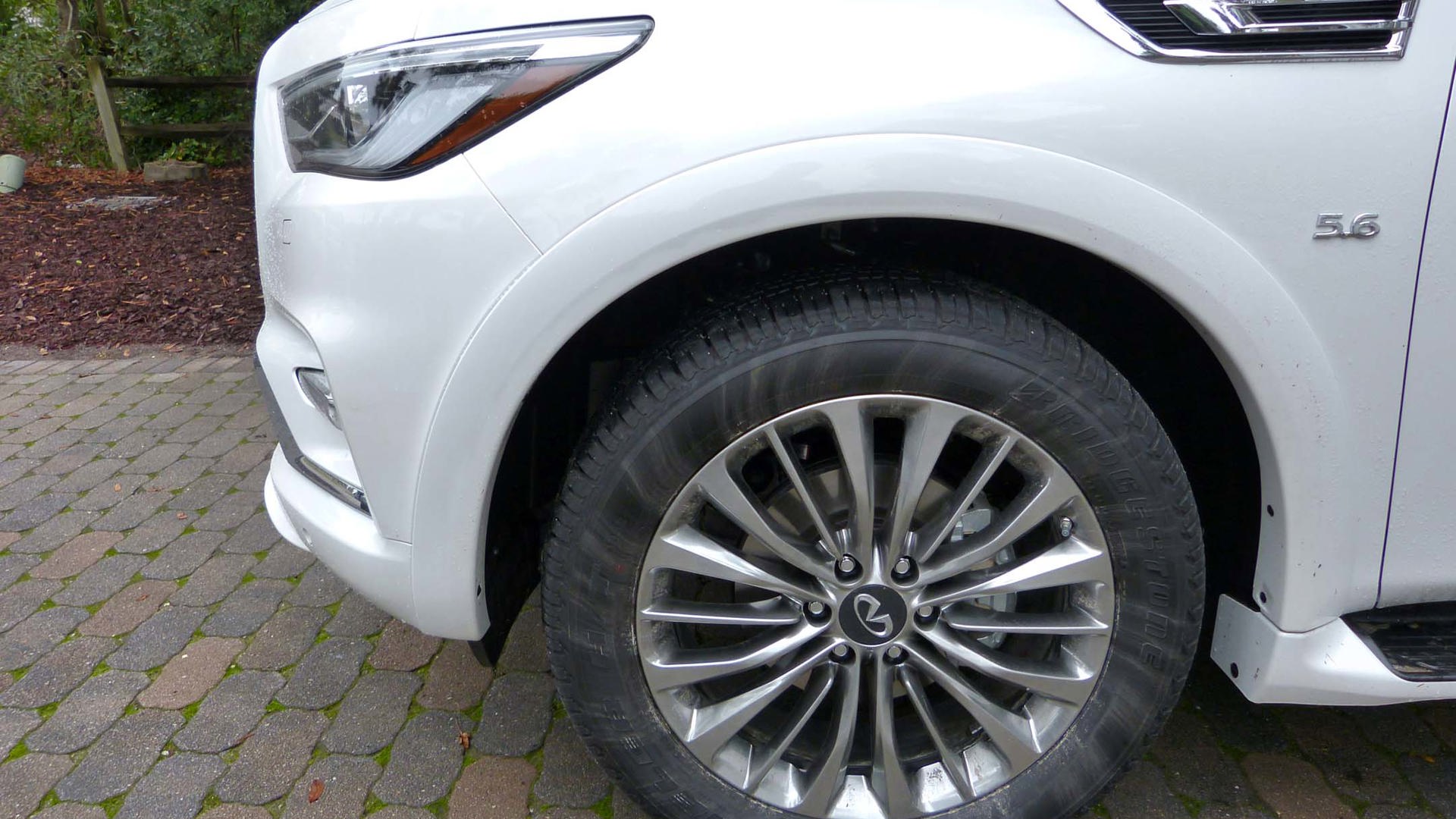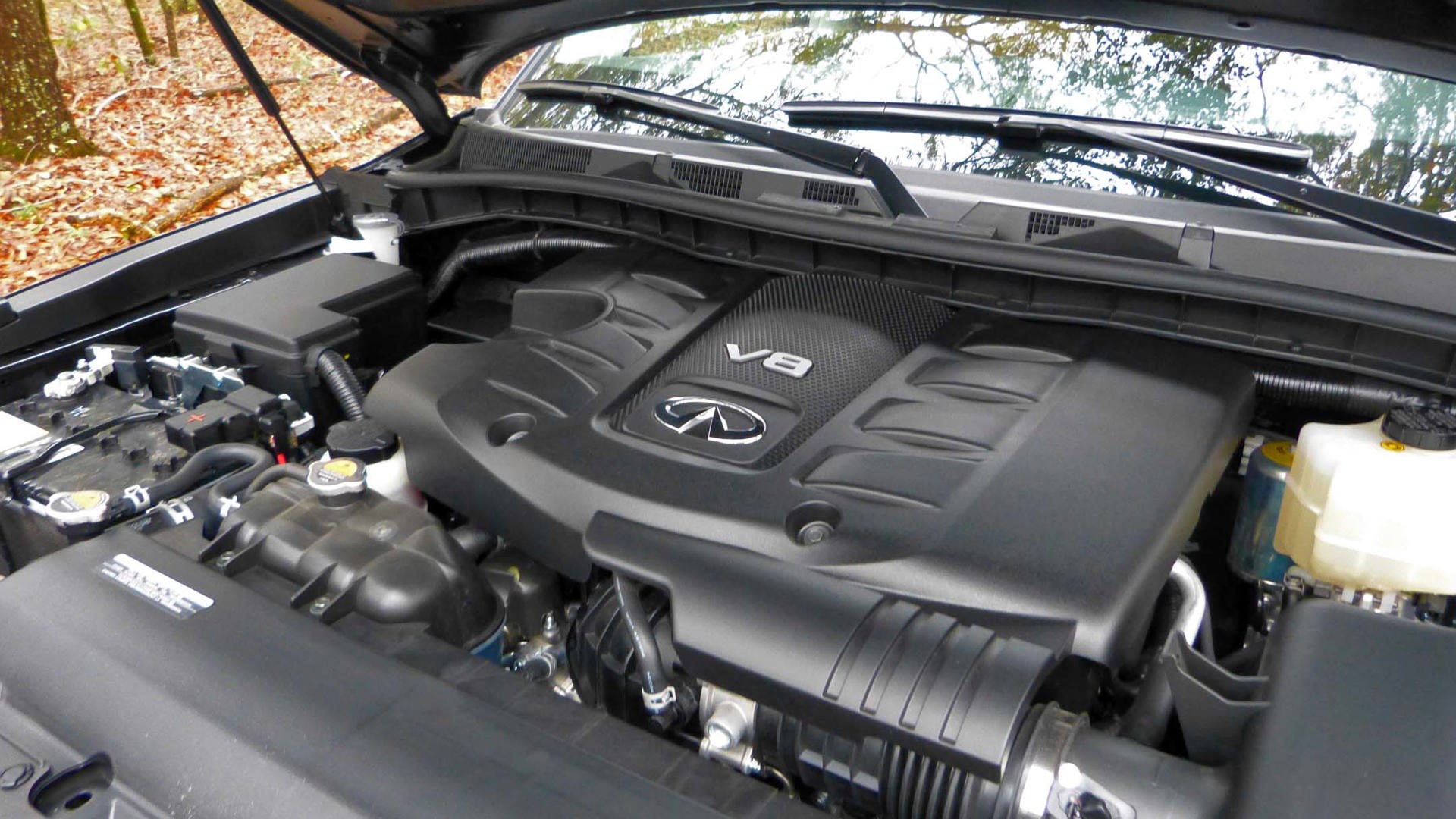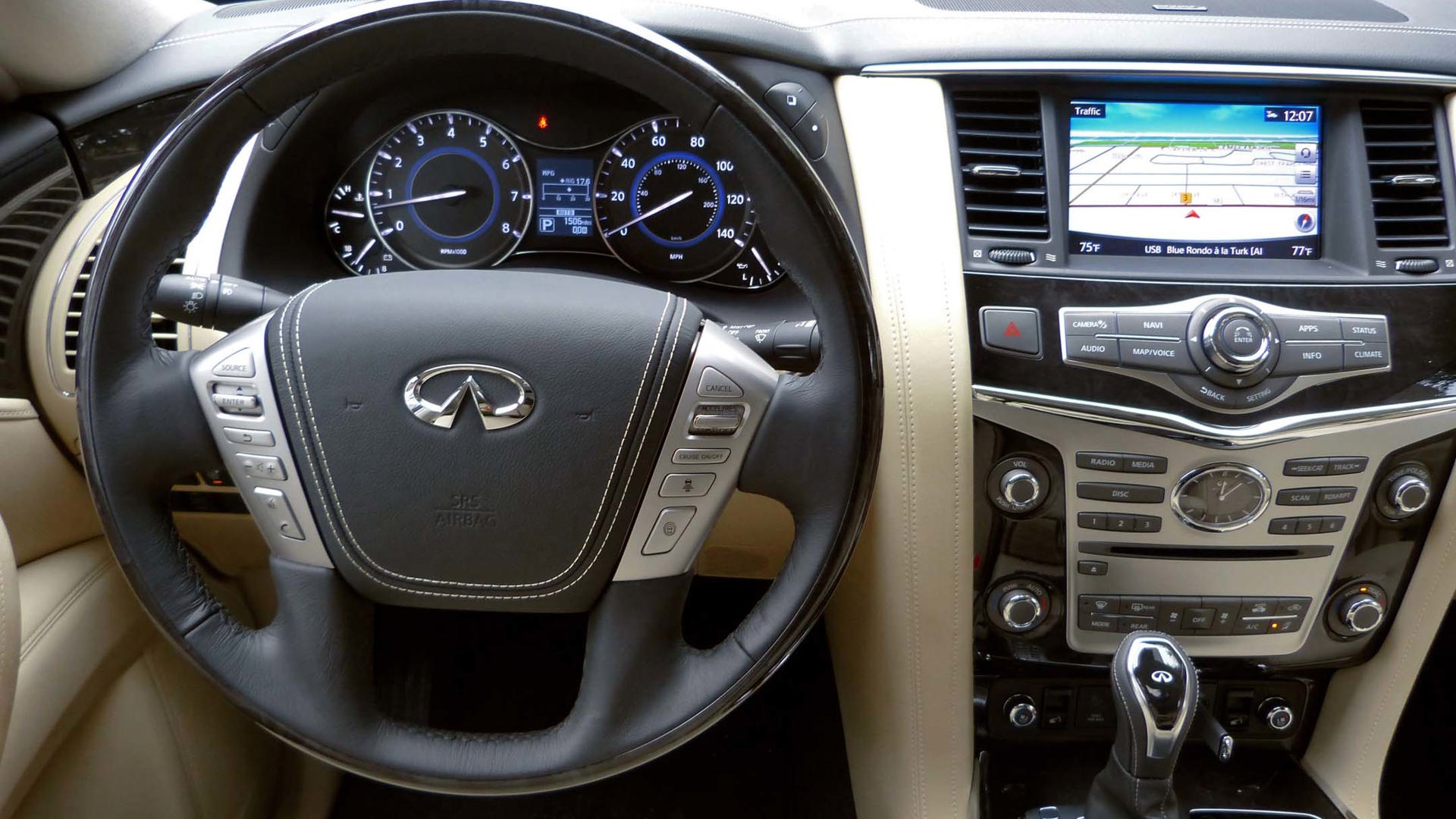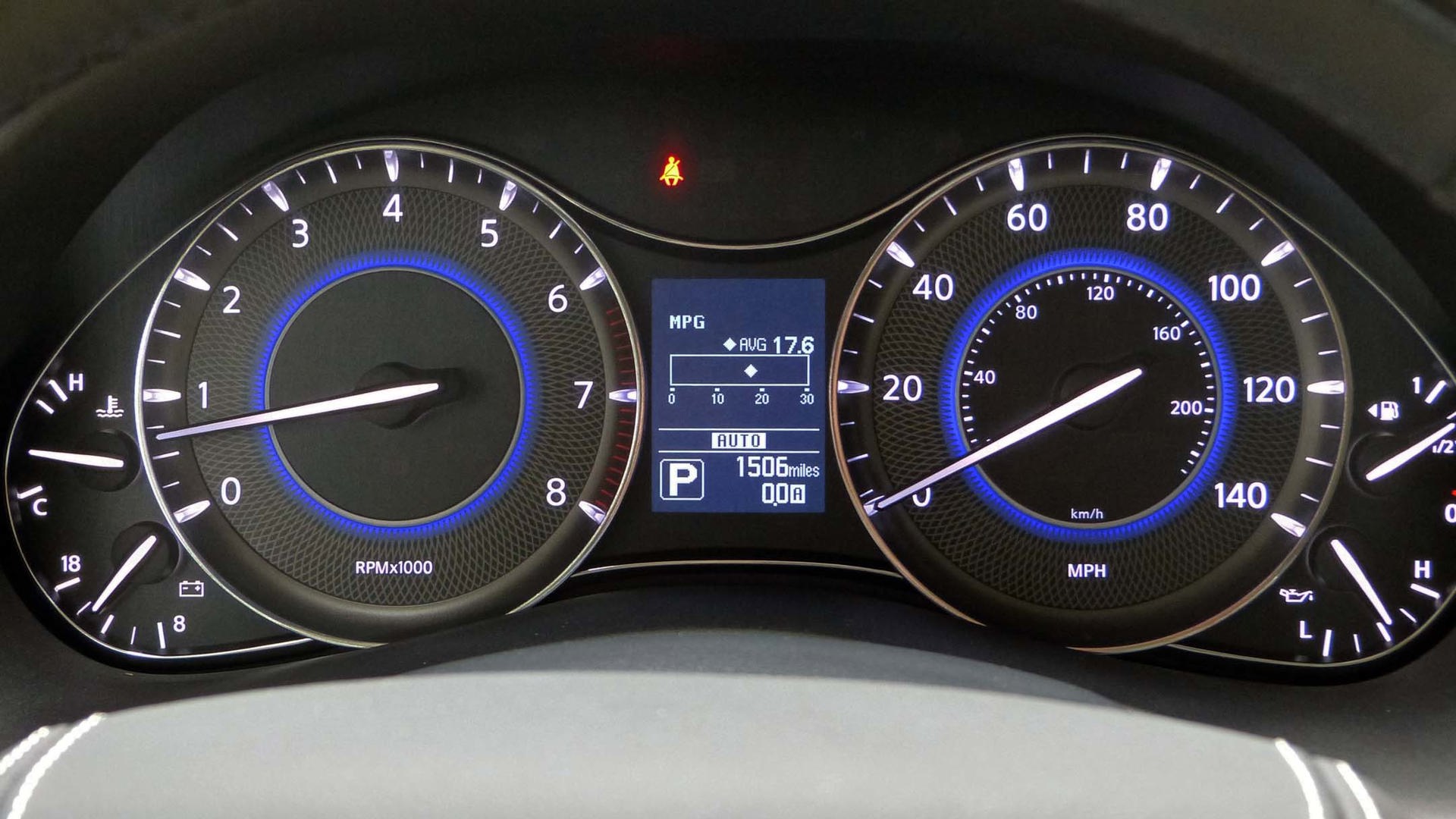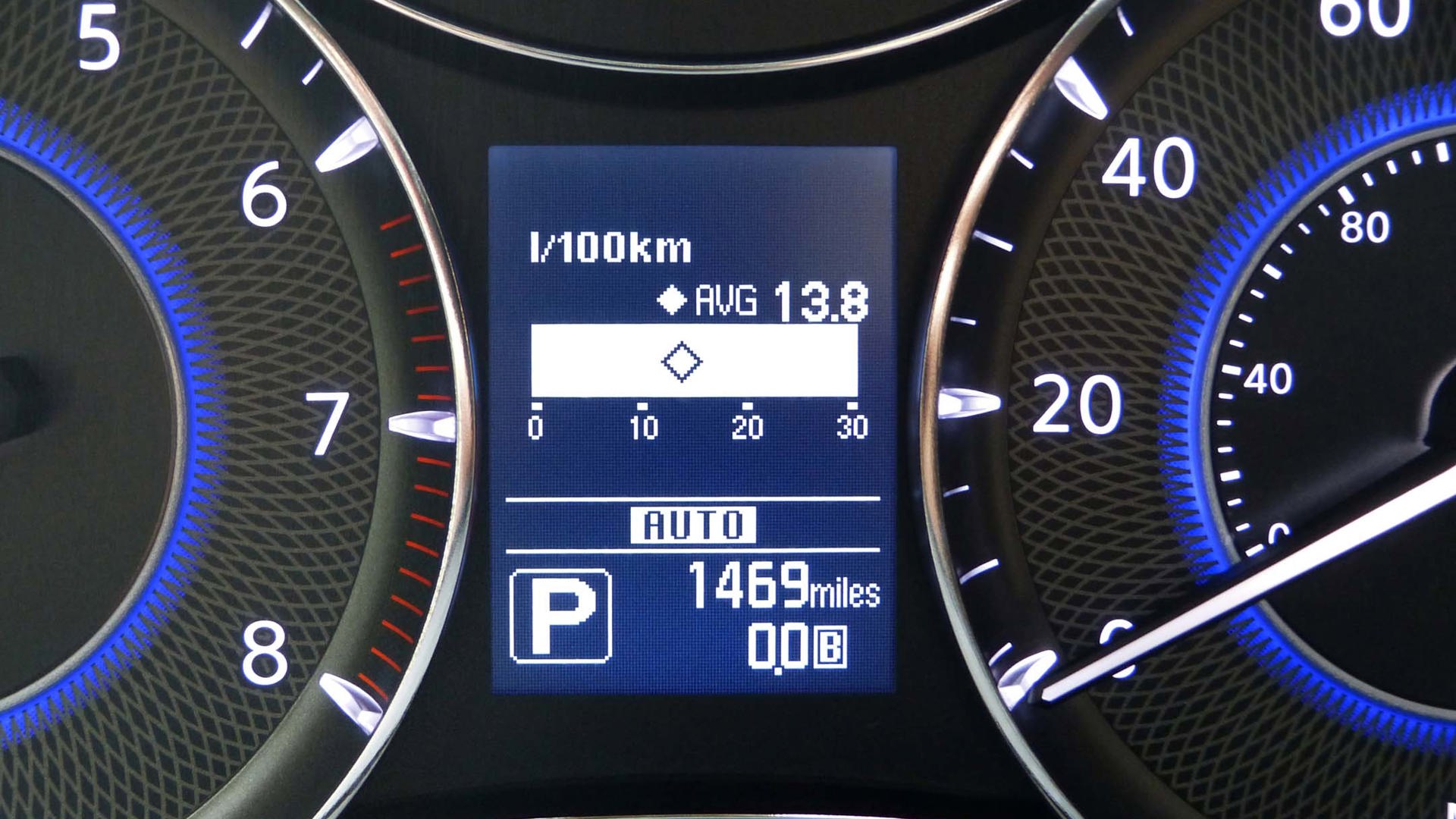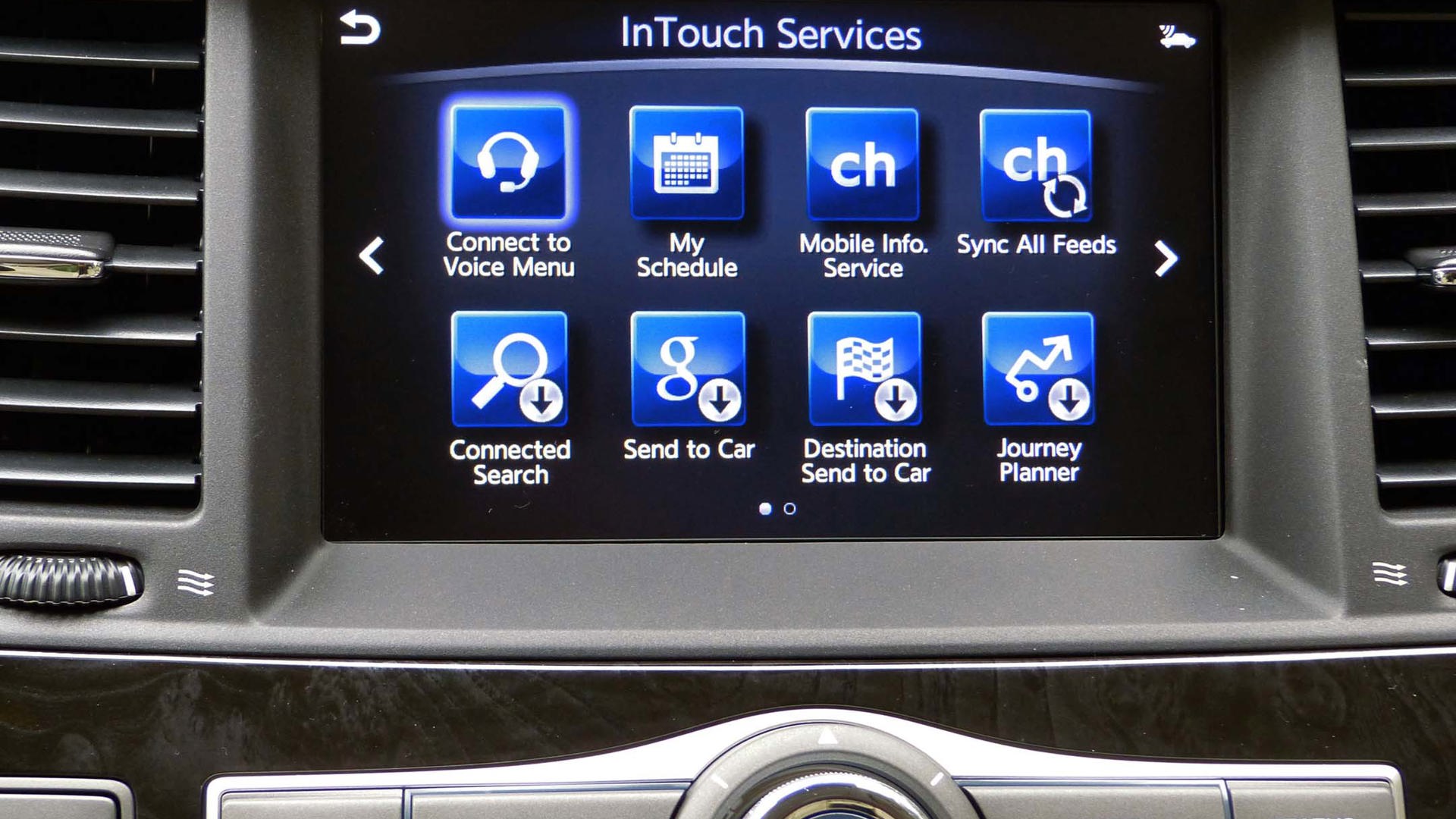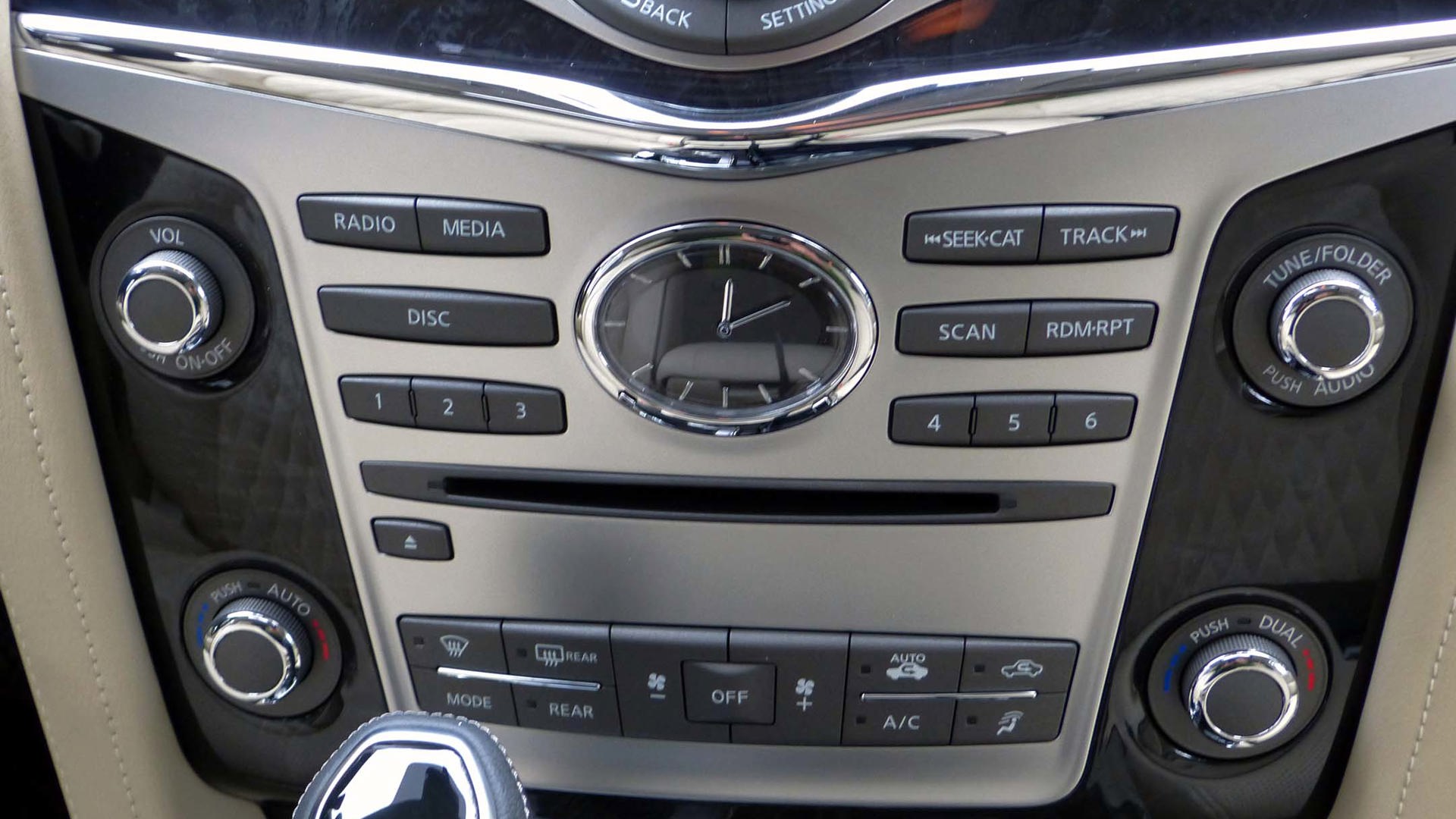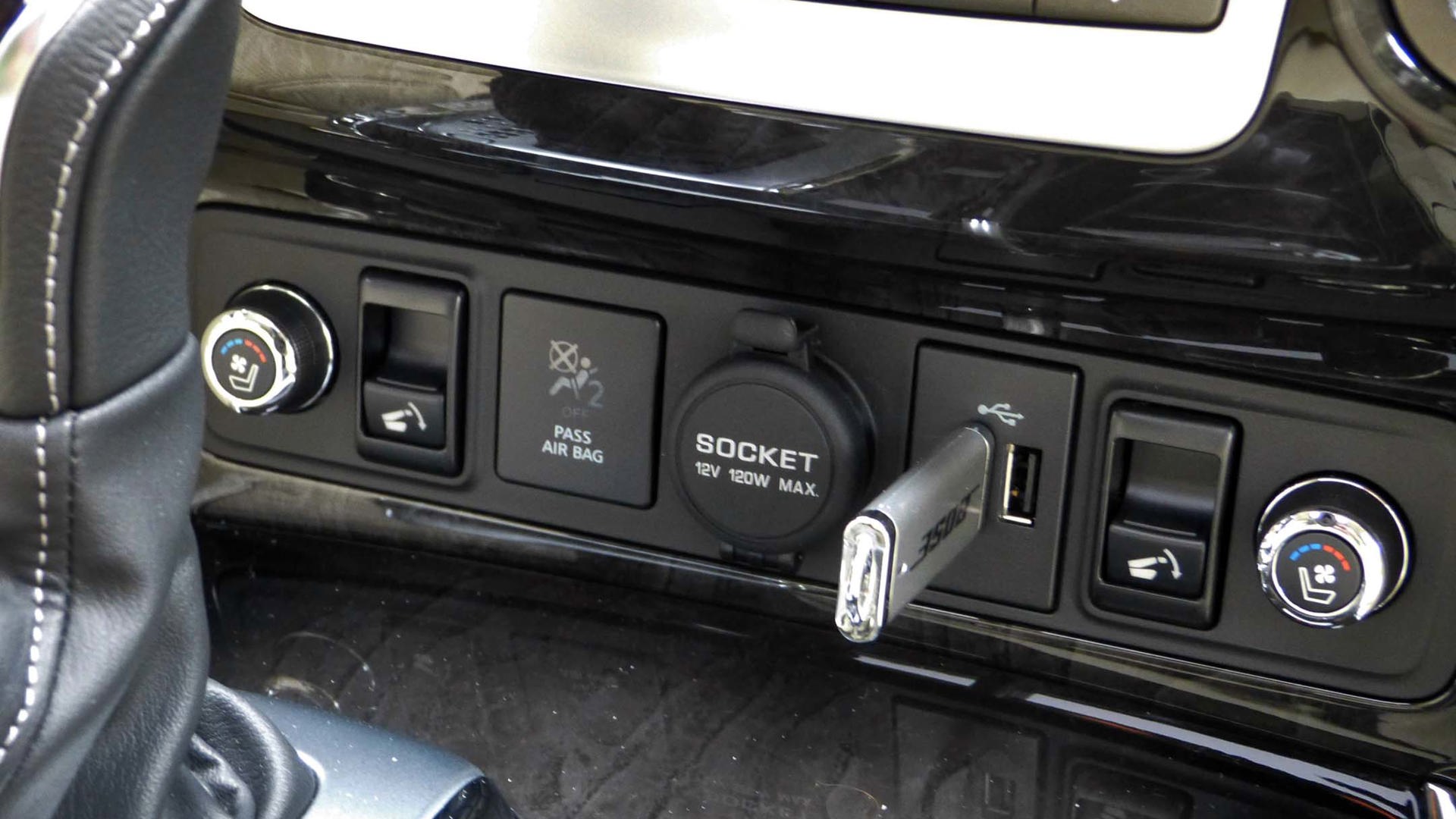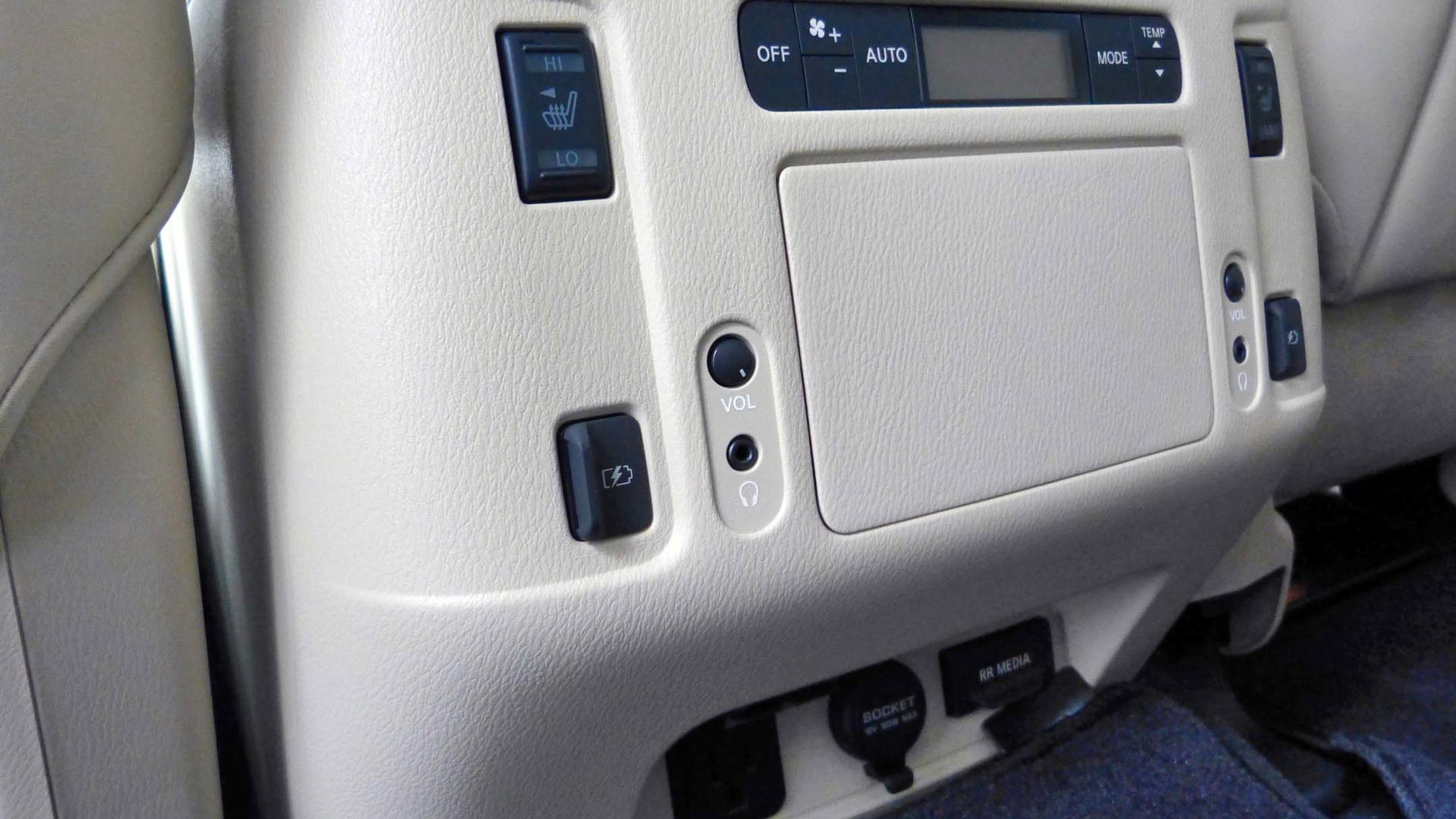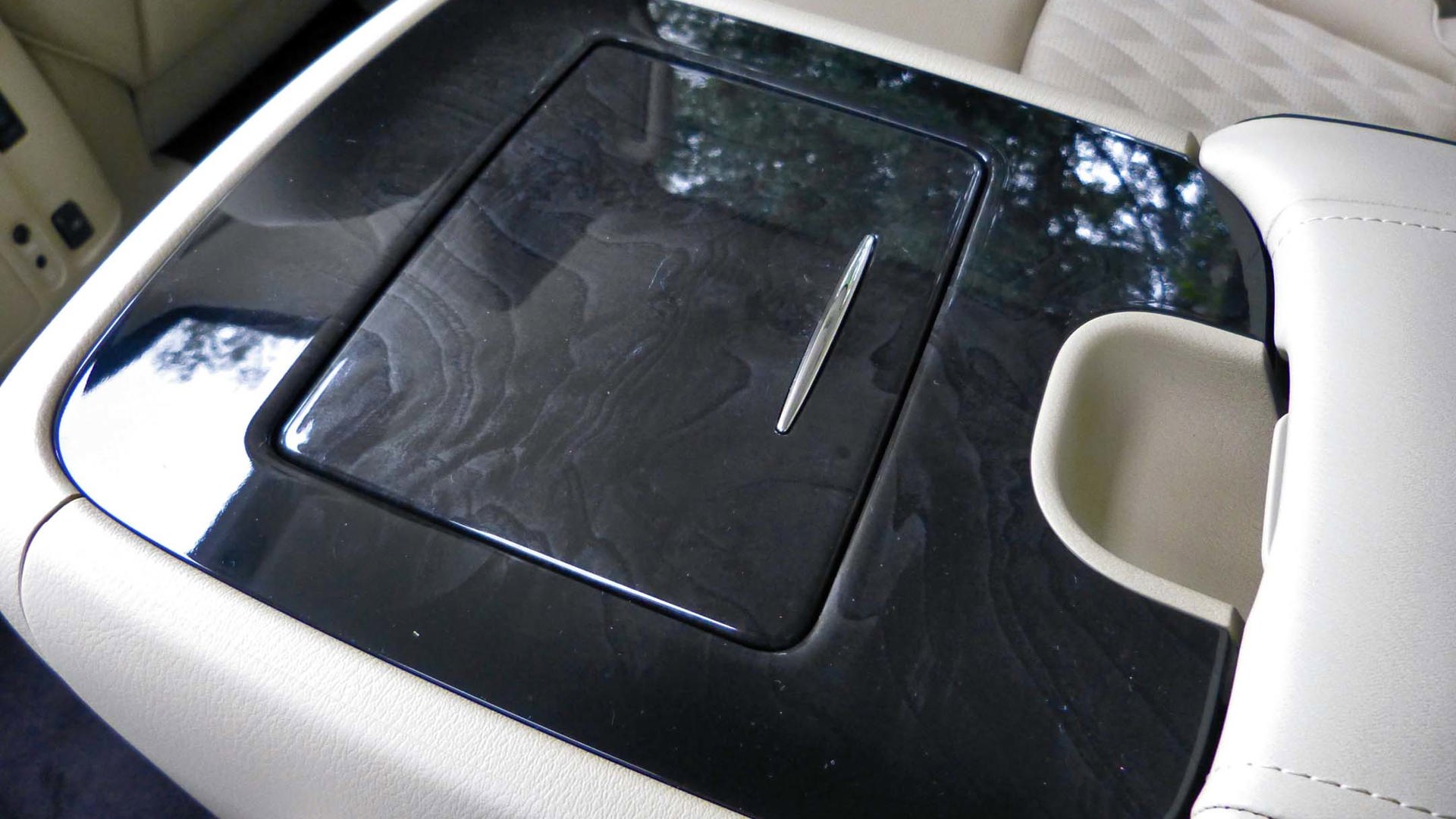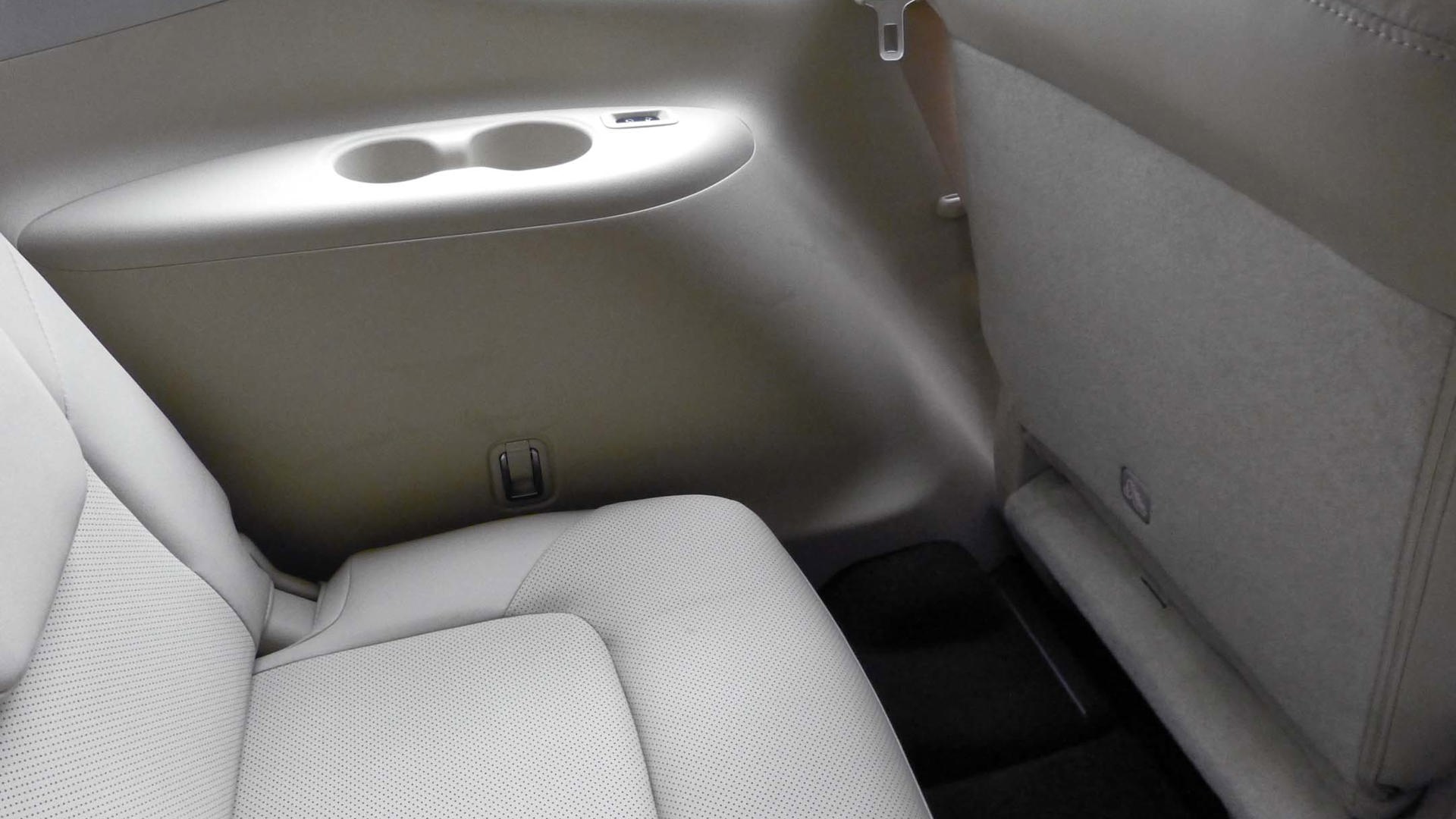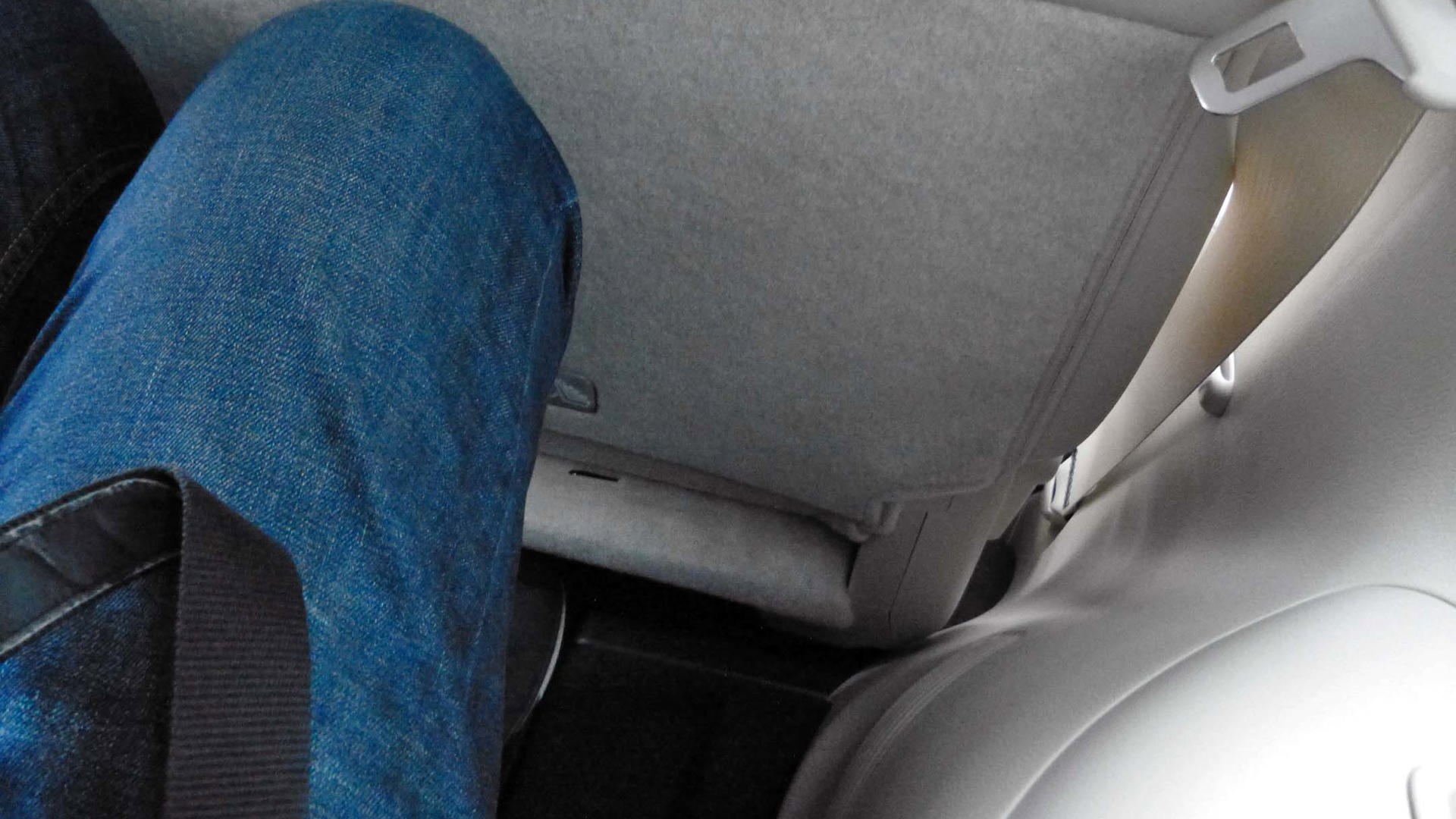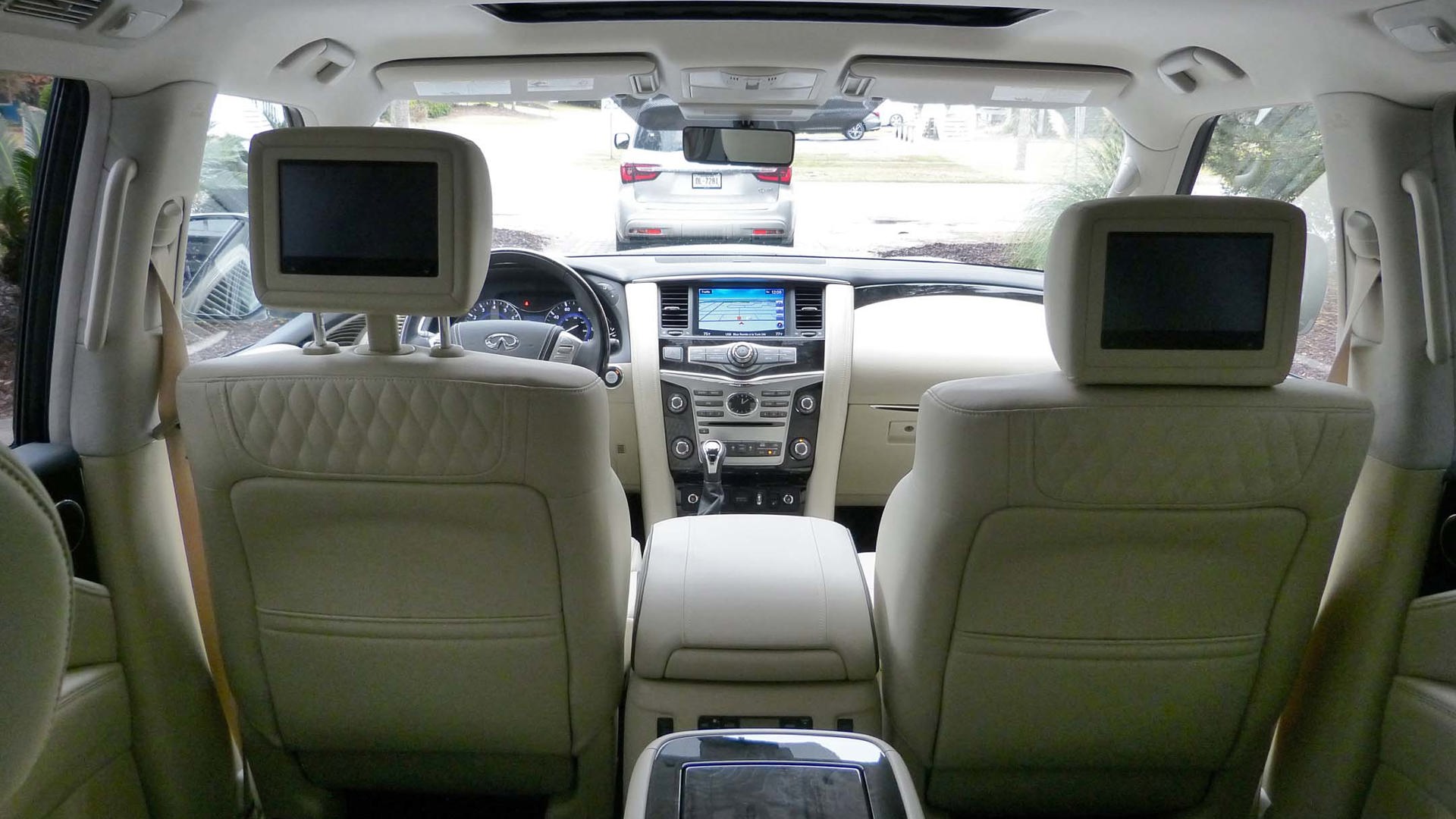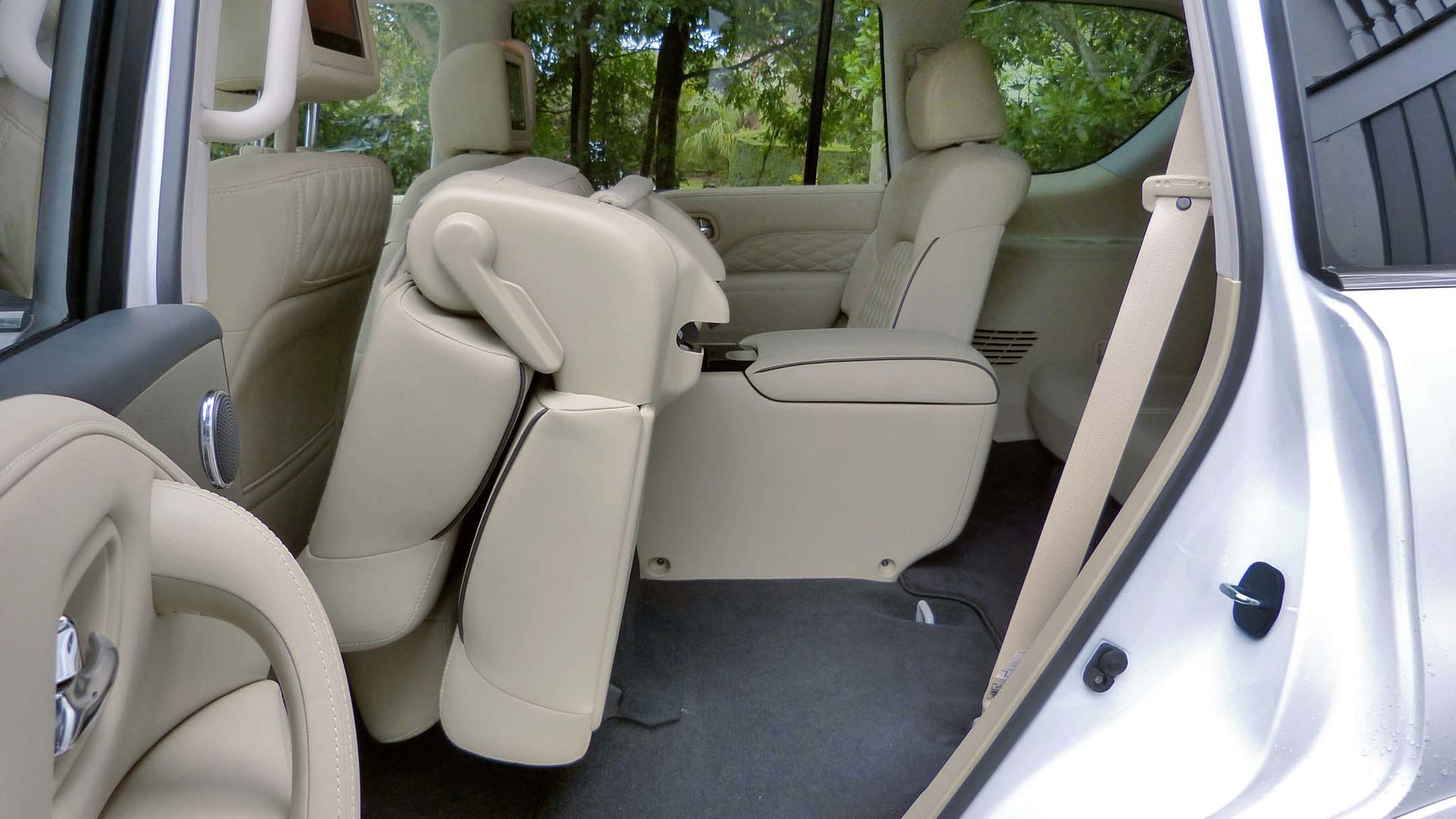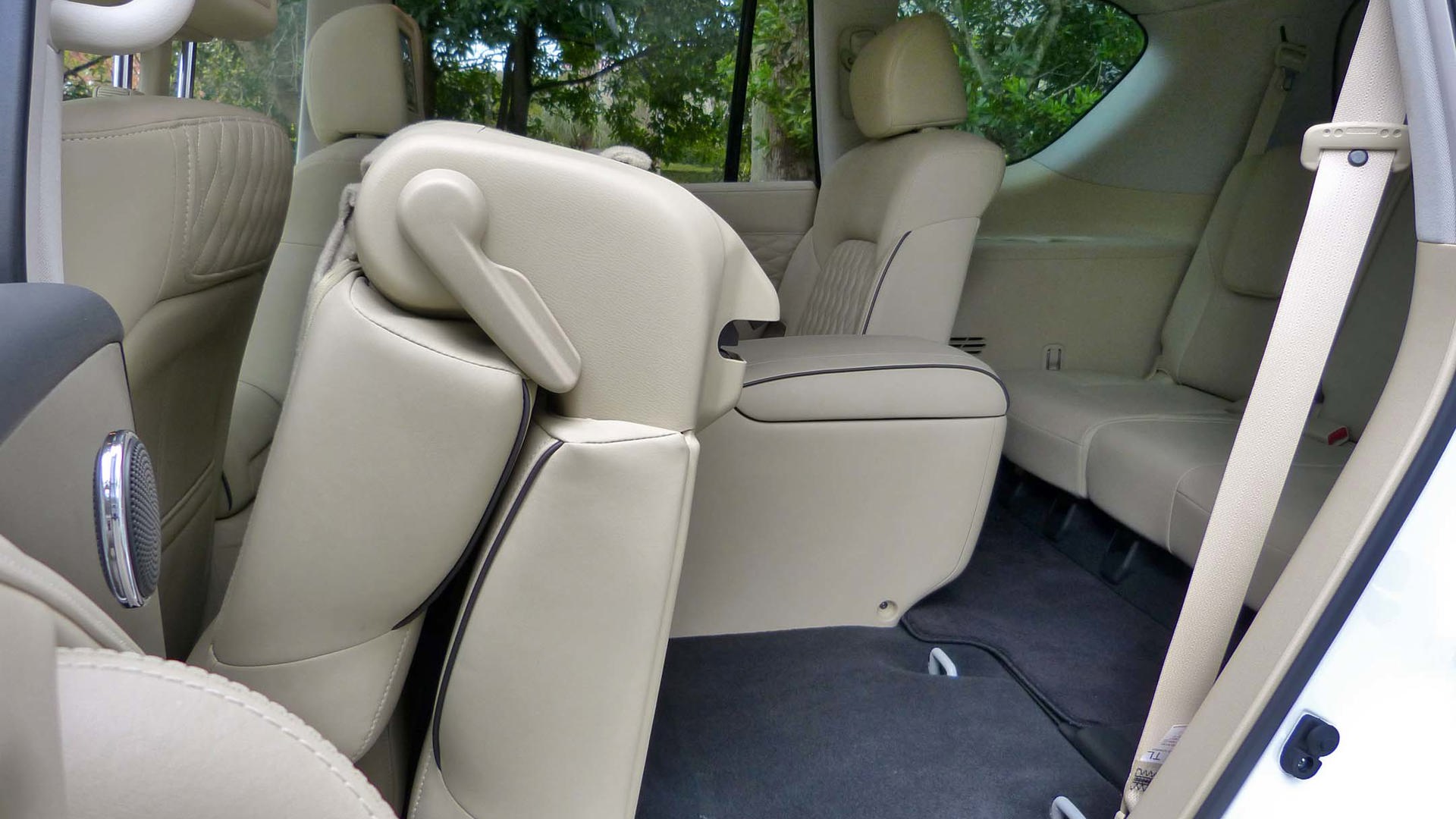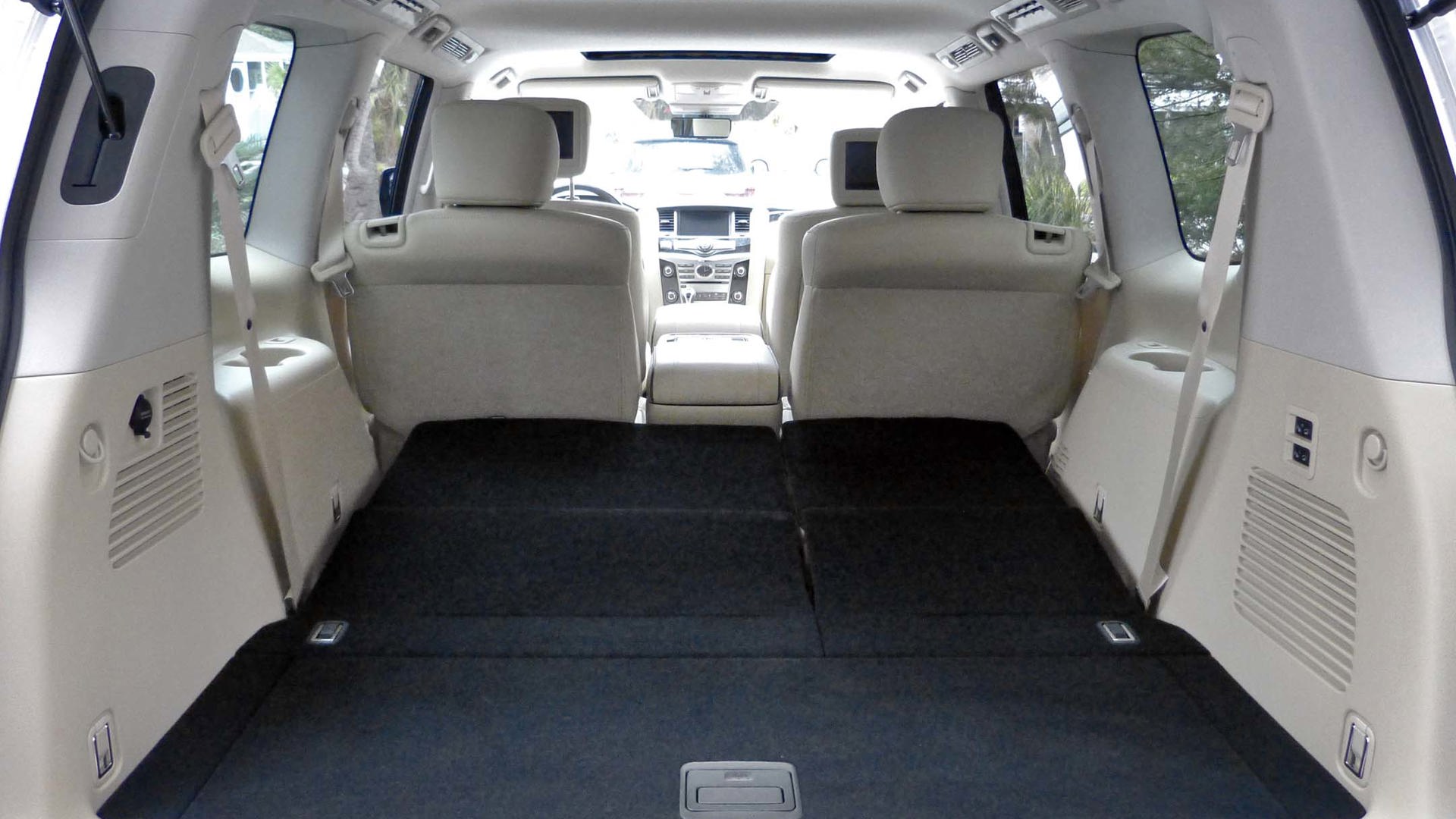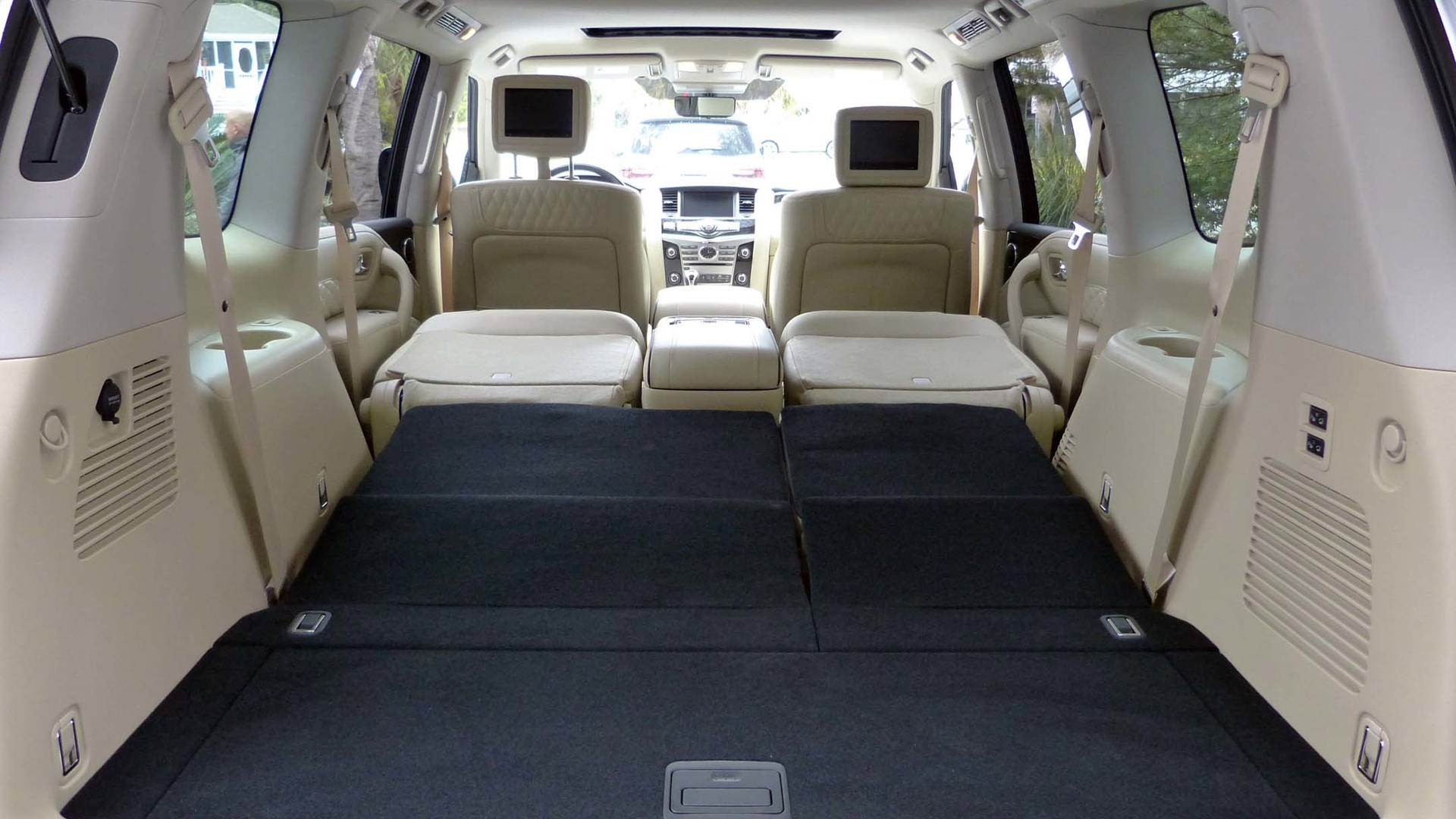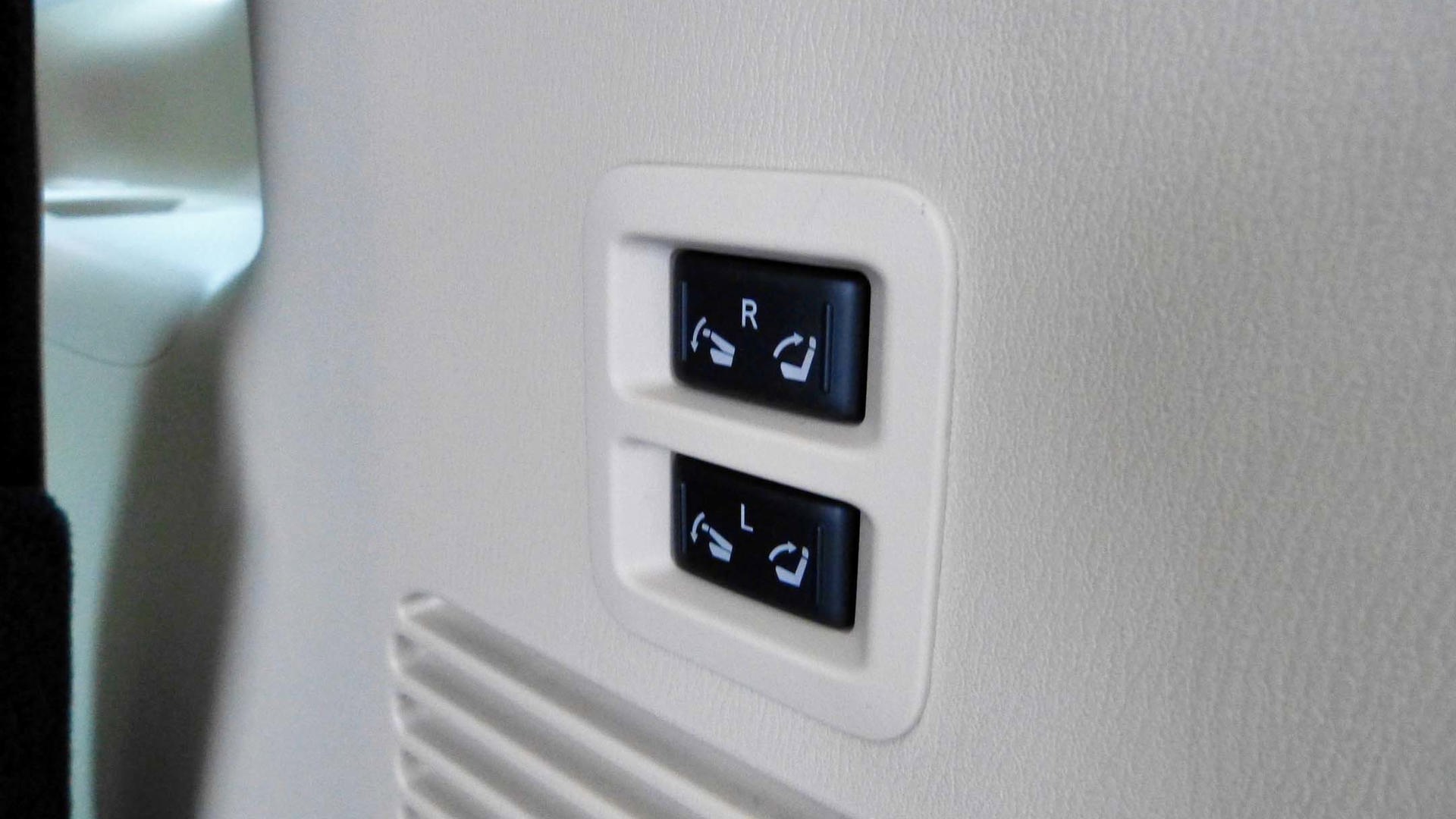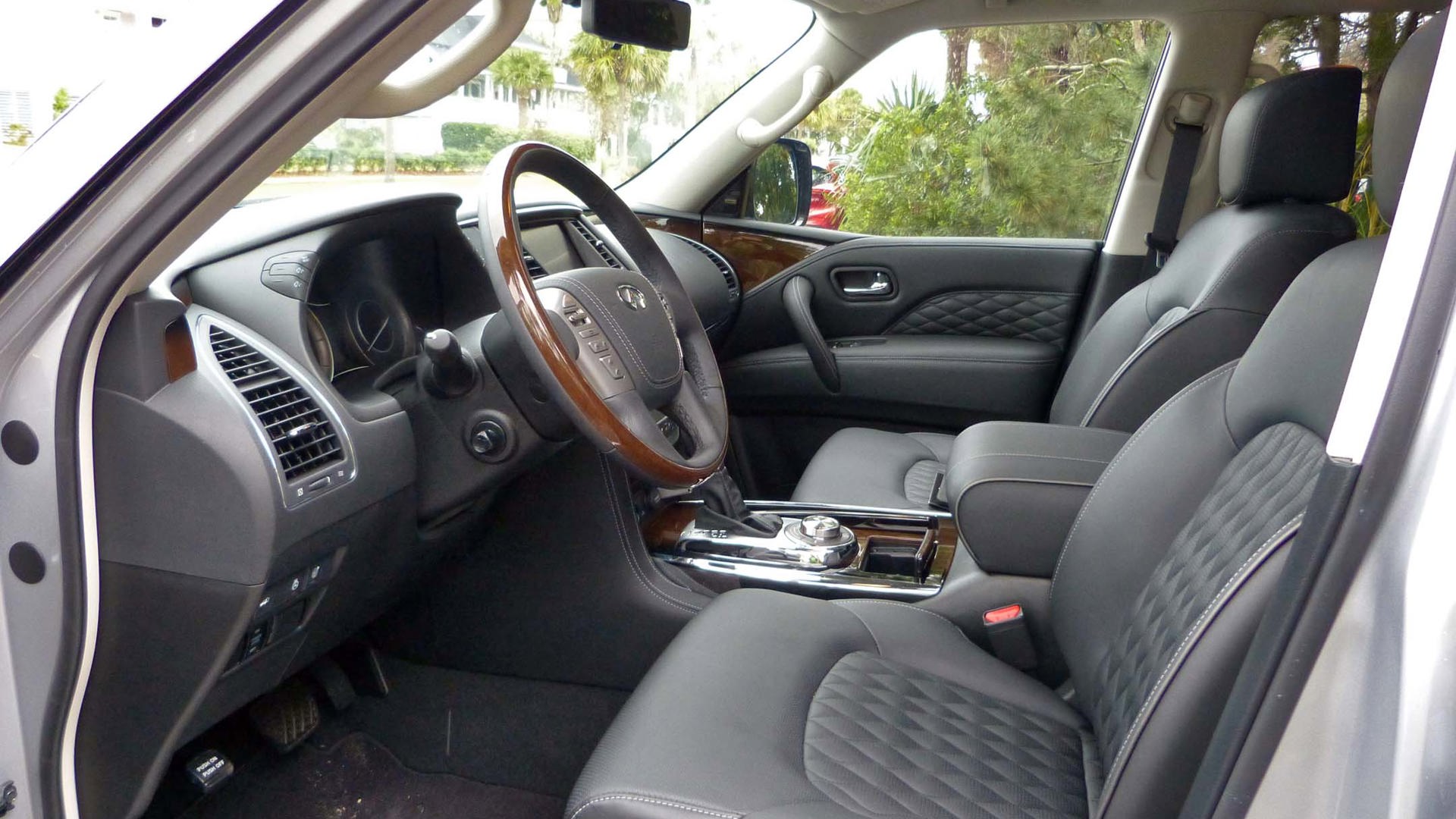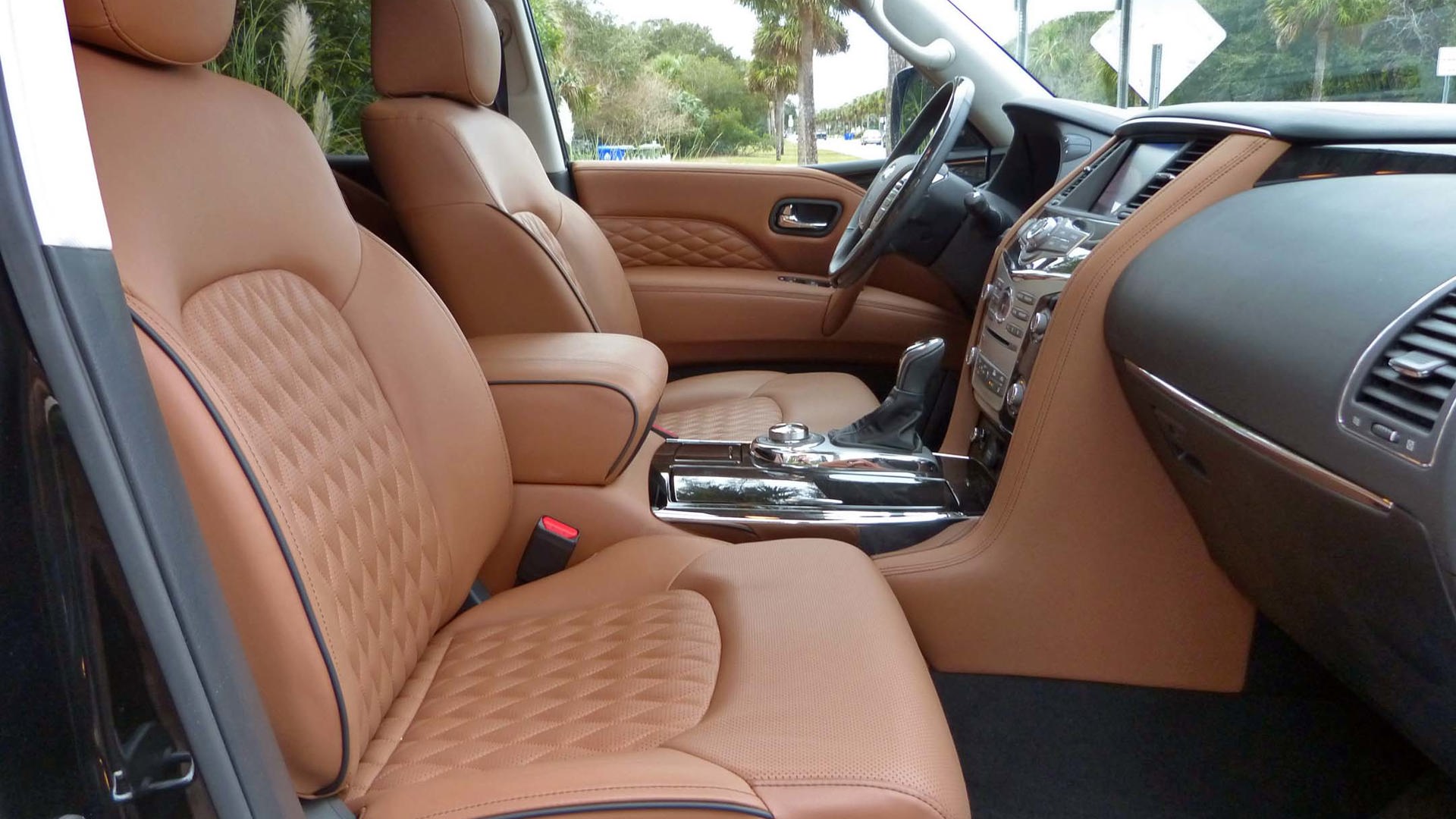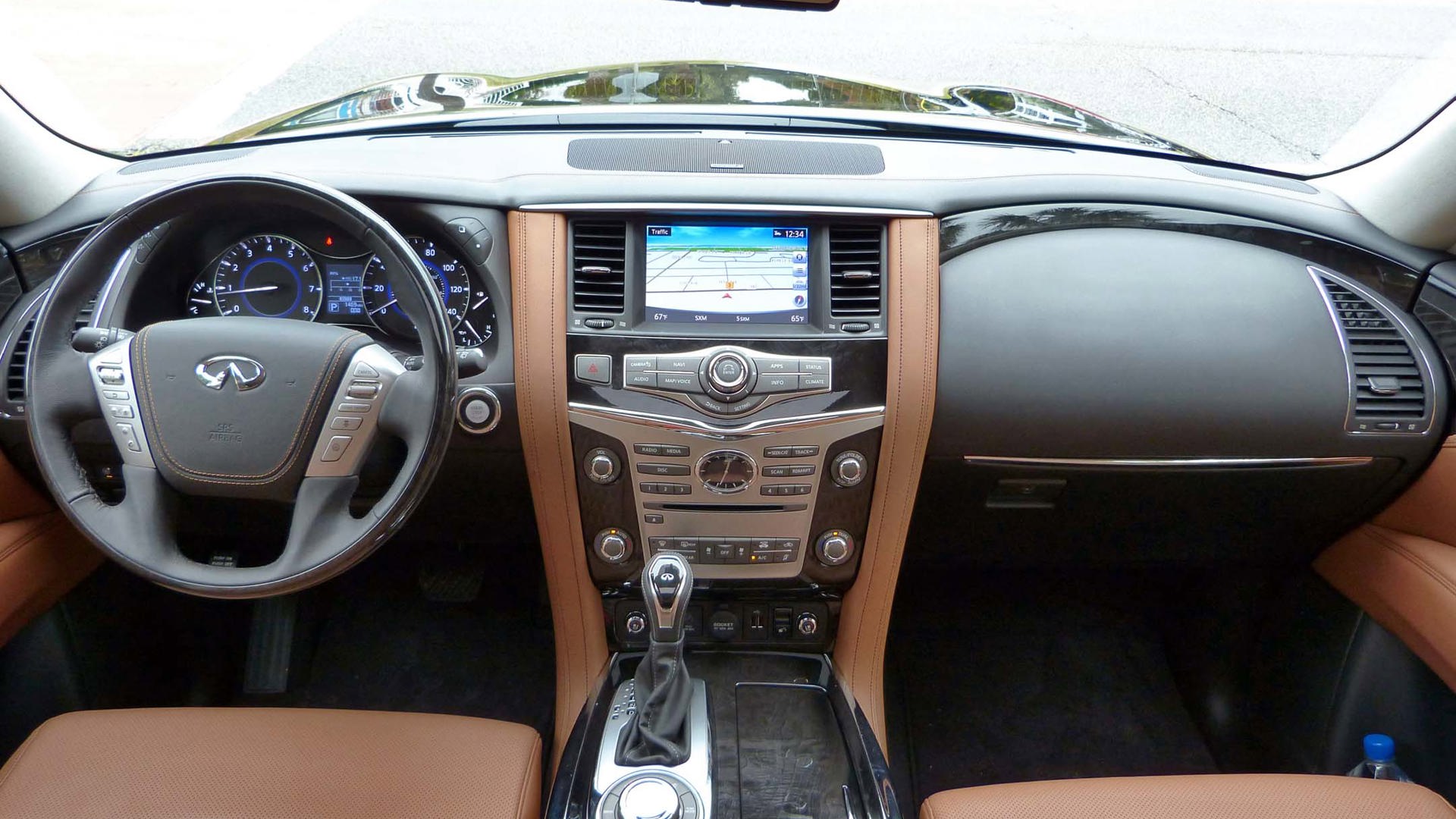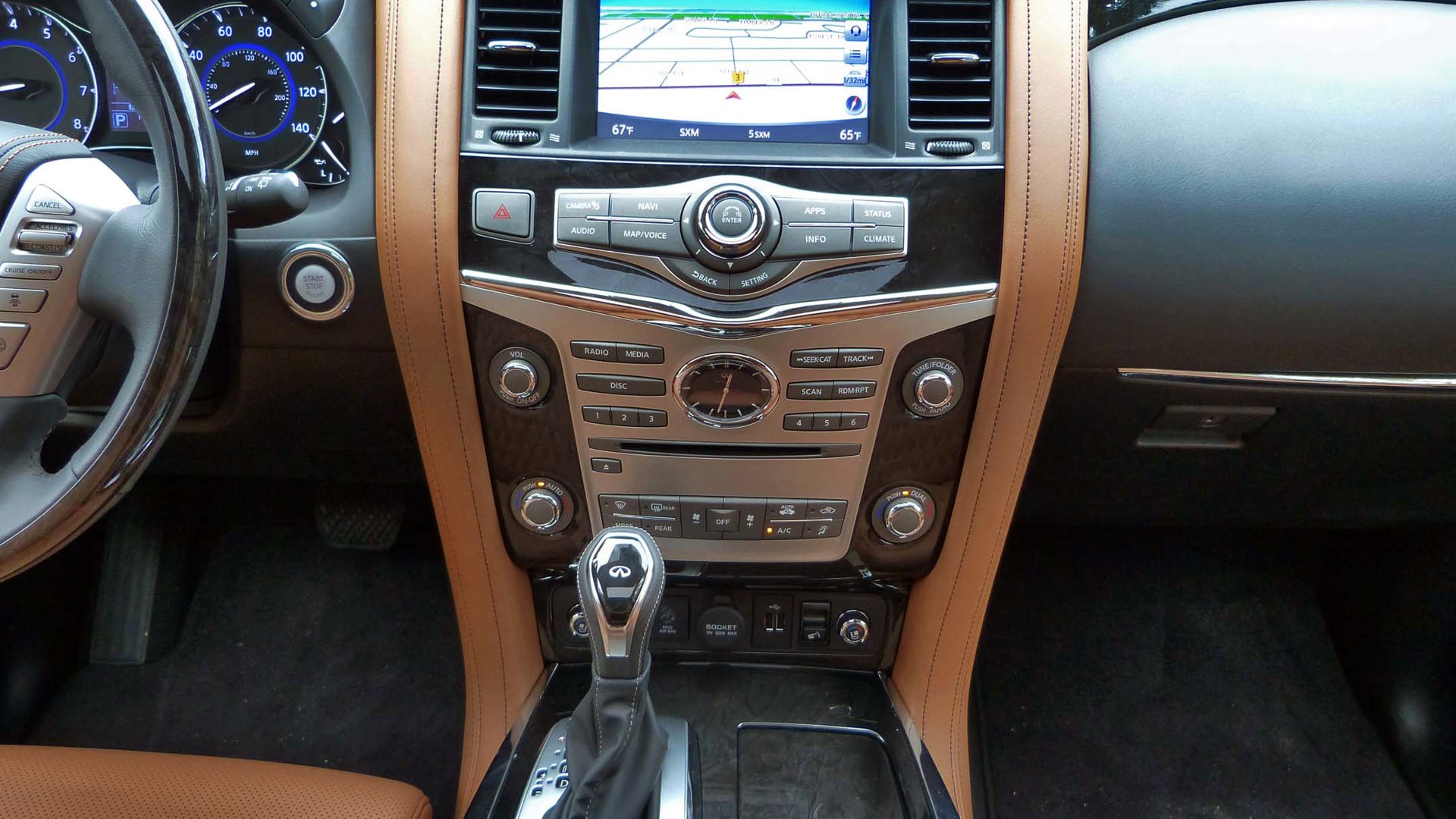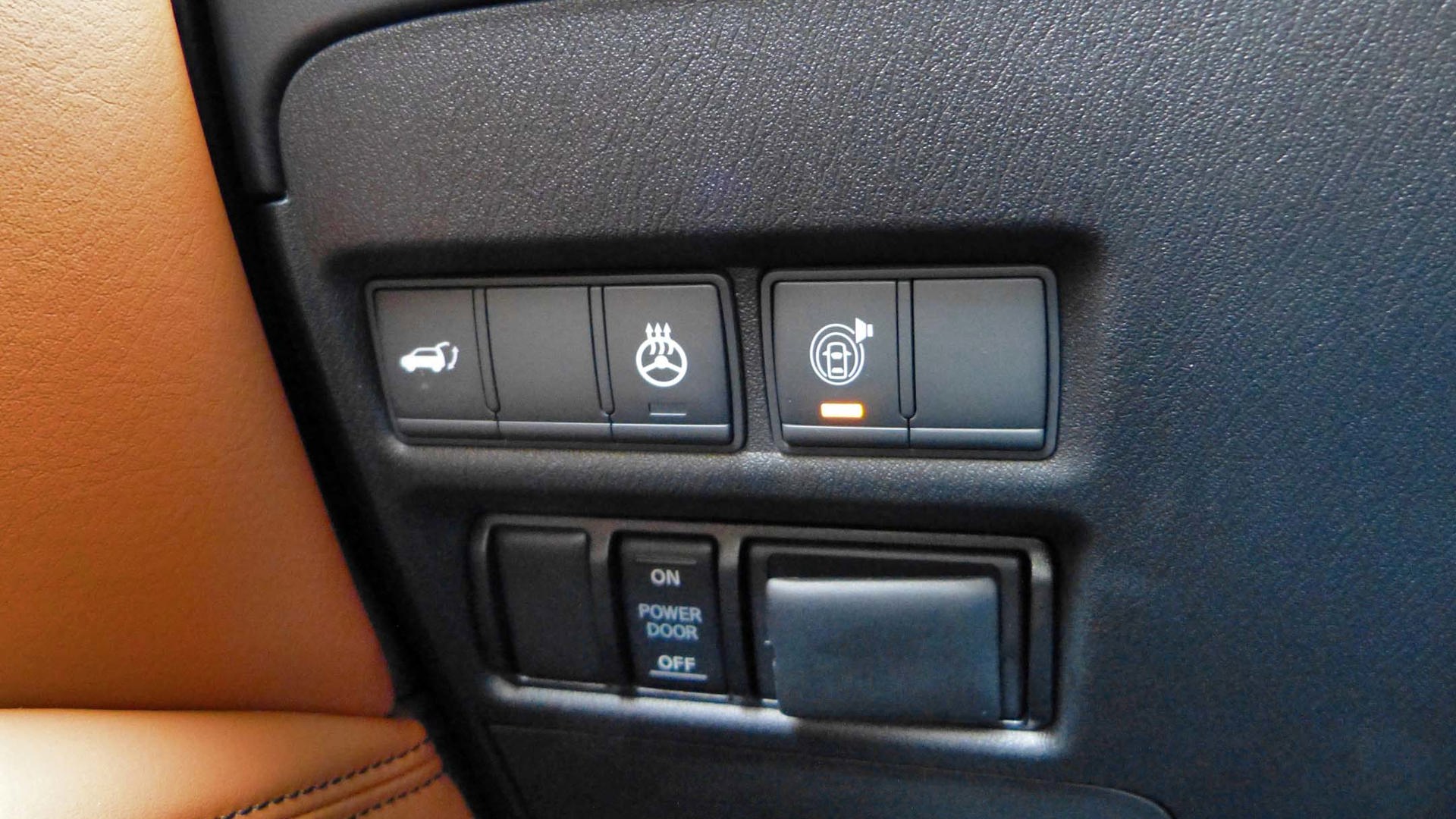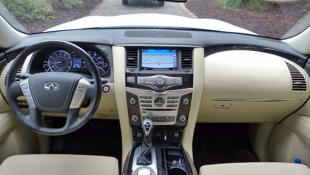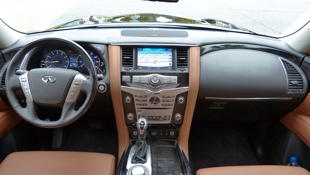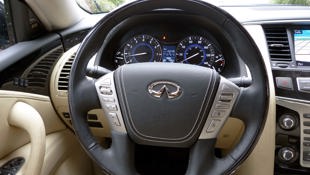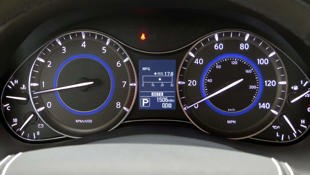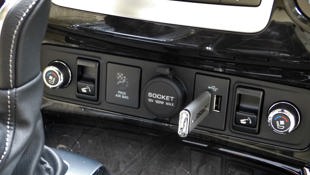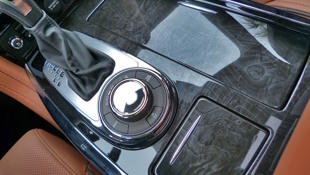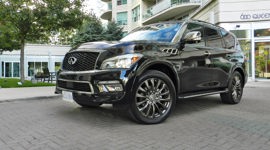Do you remember the girl from Dirty Dancing? The one with the nose? I loved that nose. That enormous, ugly nose. It was brilliant. And then, she went and got it changed. Got herself a nose job and faded into obscurity. Shame.
The subtle changes to the QX80 are nothing but positive.
I thought of Jennifer Grey the entire flight to Charleston, South Carolina, for the reveal of the 2018 Infiniti QX80. There are some minor tweaks, but the major mid-cycle changes are skin-deep. I have been guilty of brutally slamming the QX80 in the past – hamming up the polarizing looks and distinctive lines.
But now I was worried. What if the changes are too much? What if the QX80 ends up looking like all the other gargantuan three-row SUVs on the road?
My fears were unfounded. The subtle changes to the QX80 are nothing but positive.
Infiniti’s flagship sells in small numbers, about 1,000 a year in Canada. Its purpose is not sales-chart dominance. It exists to command attention – so designers had to make sure they improved its aesthetics without diminishing its personality.
The fenders no longer drop down as deep, thrusting the clamshell hood into the air like the hood of a manatee. Instead, they’re higher, straighter, and more cohesive. The porthole vents in the fenders (they’re real, by the way) are no longer reminiscent of old Buicks, instead they’re a single unit that looks elegant and actually fits. The new LED lights add a connection to the rest of the Infiniti lineup, and even Infiniti’s “double-arch” grille looks less like the gaping maw of a feeding catfish.
It still sucks in the same enormous amount of air, and feeds it to the same 5.6L V8, which in turn transforms the air and fuel into 400 hp and 413 lb-ft of torque – which is all sent through a seven-speed automatic and then through a transfer case to all four wheels. That transfer case allows for a two-wheel drive mode, 4WD HI and 4WD LO modes – but the RWD mode is a slip-and-grip that will start sending power to the front if it deems it necessary.
This hampers skids but doesn’t eradicate them – much to the chagrin of my co-driver: “That’s the last time we go down a gravel and dirt road ‘for the photos’.”
And yes, you can surprise a nervous passenger with this 2,671 kg SUV, whose on-paper numbers don’t do justice to the vigorous powerplant. In short: the QX80 hauls backside.
Incidentally, it also hauls trailers: to the tune of 8,500 lb.
The entire drivetrain is a carryover, and as such has the same basic specifications as before. Fuel economy is officially rated at 17.4/12.2 L/100 km city/highway. After a day of mixed rural and city driving we saw an average of 13.1 L/100 km.
The trim levels have been consolidated from three to two. The top-trim Limited models are gone, and with them the gorgeous open-pore wood treatment I fell in love with back in 2015. It added a classic nautical touch to this ocean-liner SUV and I hope they bring it back. The rest of the Limited trim features are now found lower in the ladder, on the Technology trims. Base trims get 20-inch wheels, three-zone climate control, intelligence key, navigation, and leather, as well as a small sunroof.
Technology trims add 22-inch wheels, the Hydraulic Body Motion control, lane-keep assist, blind-spot monitor, adaptive cruise control, forward emergency braking, back-up collision prevention, and predictive forward collision warning.
They also get the new smart rear-view mirror. It operates in normal mirror mode, or as a screen projection of the image taken from a camera mounted behind the QX80’s rear glass. Unlike the Buick system, which is mounted on the tailgate and comes with a washer, this system is behind the rear windscreen and is therefore cleared by the main rear window washer and wiper. It offers more than 45 degrees of visibility, compared to 20 offered by the mirror itself.
The materials have all been upgraded, from the roof lining to the leather atop the shift knob and steering wheel, and even the piping on the leather seats. There’s more leather too: it’s been added to the centre console and armrests.
Infiniti’s InTouch connectivity is now available, and offers a lot of the same phone projection features as Android Auto and Apple CarPlay. It takes a lot more setup than those systems, and isn’t as intuitive, but it does include remote vehicle management for remote start, location finder, etc.
While the dash layout and instrument cluster is also carried over, it has been tweaked behind the scenes. The standard rear-seat entertainment screens and central command touchscreen are all faster and have better graphics than before, rounding out the subtle-but-appreciated interior changes.
Captain’s chairs in the second row are even more comfortable than the ultra-plush seats up front, and the armrest and recline makes them better than the chairs in my house. I wish they were removable, not for cargo reasons, but for watching hockey. There are three more USB ports for passengers than before.
The third row is comfortable for me, but taller folk will find their knees lifted too high into their chest. These seats are best for children, adolescents, or your most-hated brother-in-law. The seats recline to a steep angle and are power folding. Unfortunately, the power-folding mechanism is painfully slow. I’d prefer manual operation in this instance.
Before folding the seats, the 5,340 mm long, 2,030 mm wide, and 1,925 mm high QX80 has a cargo volume of 470 L. Fold the third row down (it folds fully flat) and you have 1,405 L, fold all the seats down (again fully flat) and you have a whopping 2,693 L. Total passenger volume is 4,319 L. So yeah, it’s a big truck, with a big interior – but as I’ve said before, if you want proper cargo volume with your three rows, you still need a minivan.
The QX80 rides smoothly, hiding the bumps of the road from one’s pampered backside with butler-esque discretion. The hydraulic steering however, betrays every minor change in surface tension. For me, I quite like the sensation of the analogue connection to the road, but I would bet money that the move to Infiniti’s electric steering or steer-by-wire systems in the next generation will win fans. Thanks to the hydraulic body motion control, which Infiniti claims gives it 38 percent less body roll than an Escalade, and to the 52-48 fore-aft weight distribution, this truck tracks with remarkable composure. I’m not saying there isn’t body roll (there is), just that the kids in the back will have a disappointingly tame game of “corners”.
The tuning of the suspension has been altered too, with five percent less tire-wall stiffness and 30 percent less damping. Thumbing their nose to industry trends, Infiniti has actually de-sportified the suspension with a view to a more compliant and supple ride. I was a fan of the QX80’s ride before, and I am still.
The previous model was already quiet, but new additions to firewall damping and rear cabin sound-deadening move the needle further towards the Lexus end of the spectrum. Road noise and wind noise is at appropriately low levels, but those 22-inch wheels and thin rubber still generate suspension noise in larger amounts than you’d hope for.
Pricing has yet to be announced but Infiniti says it won’t be far off the $75,560 that gets you into a base trim today. The Technology package is currently an $8,150 add-on and the defunct Limited trim is $93,800. You can expect the final price of a fully loaded QX80 to land somewhere between $83,000 and $90,000 – which is pricy, no matter how you carve it.
The thing is, the Infiniti QX80 feels like a $100,000 SUV inside. Its material quality and design are flagship-level.
The inside of the QX80 is still one of the most alluring interiors I’ve experienced. More so, because it formerly stood in stark contrast to the exterior. Now, the outside is just as enticing.

